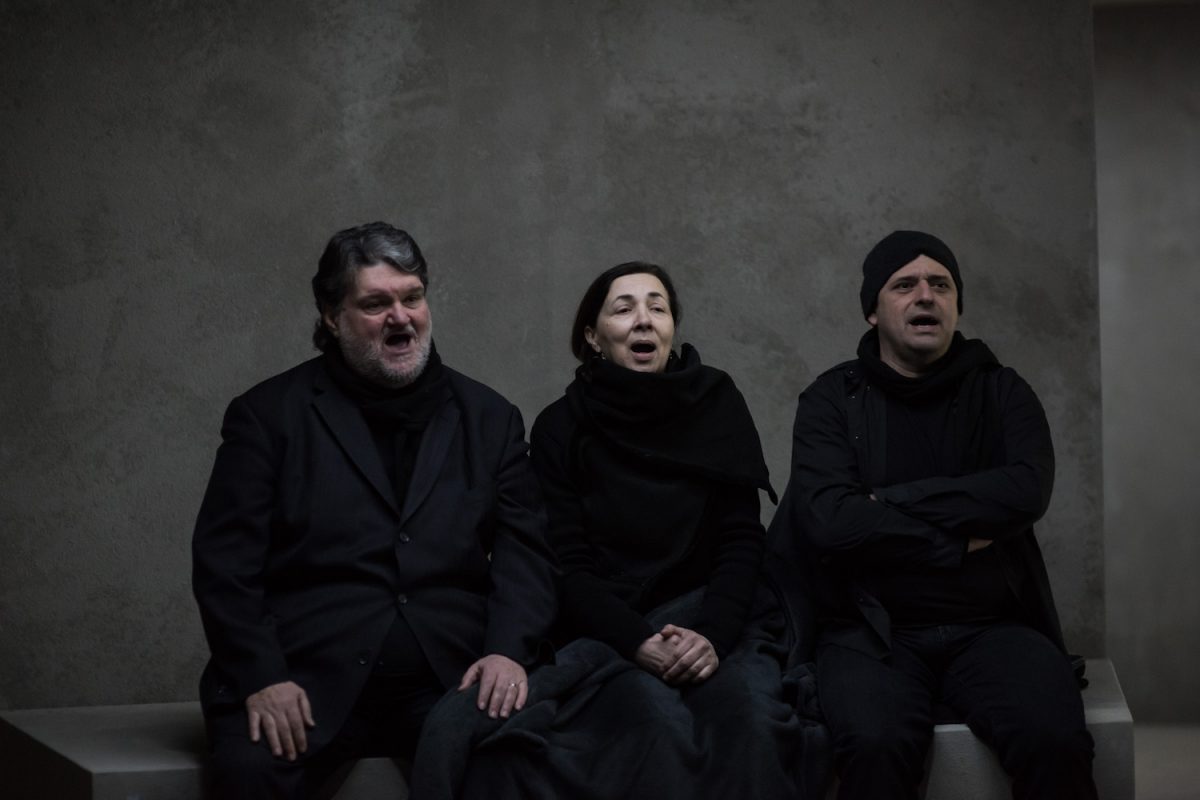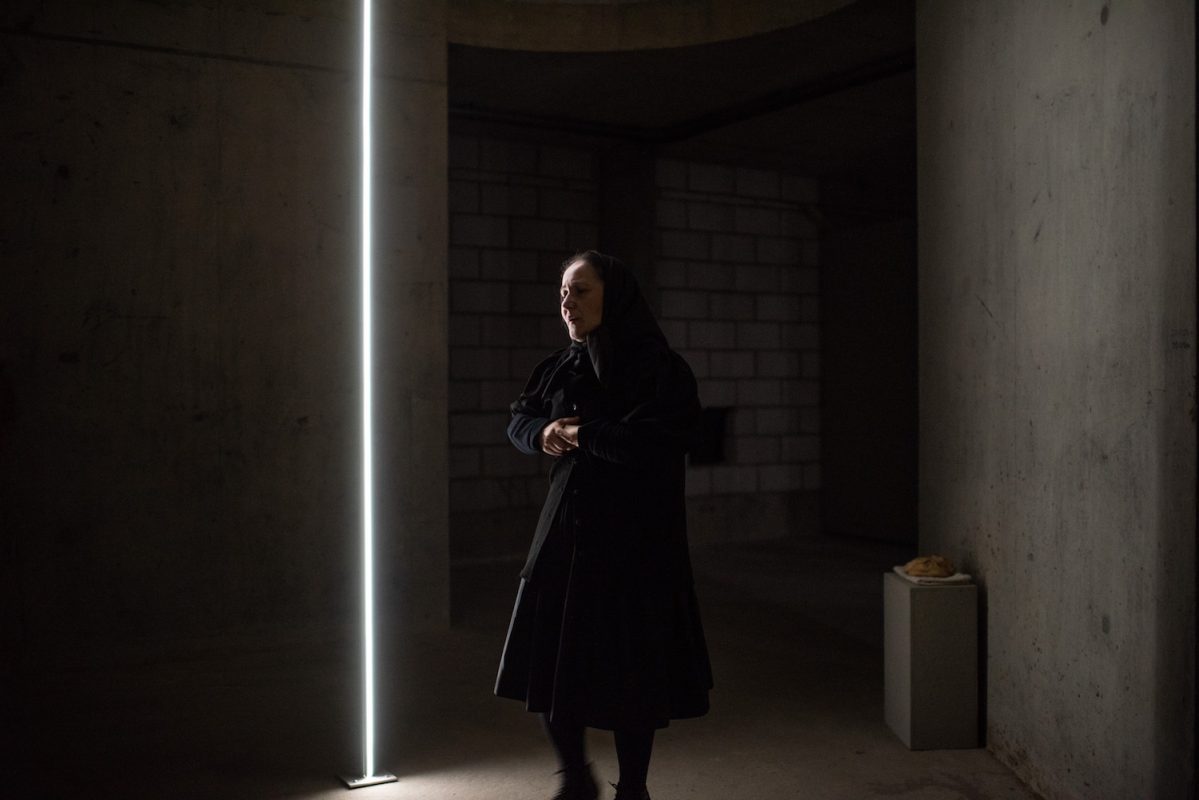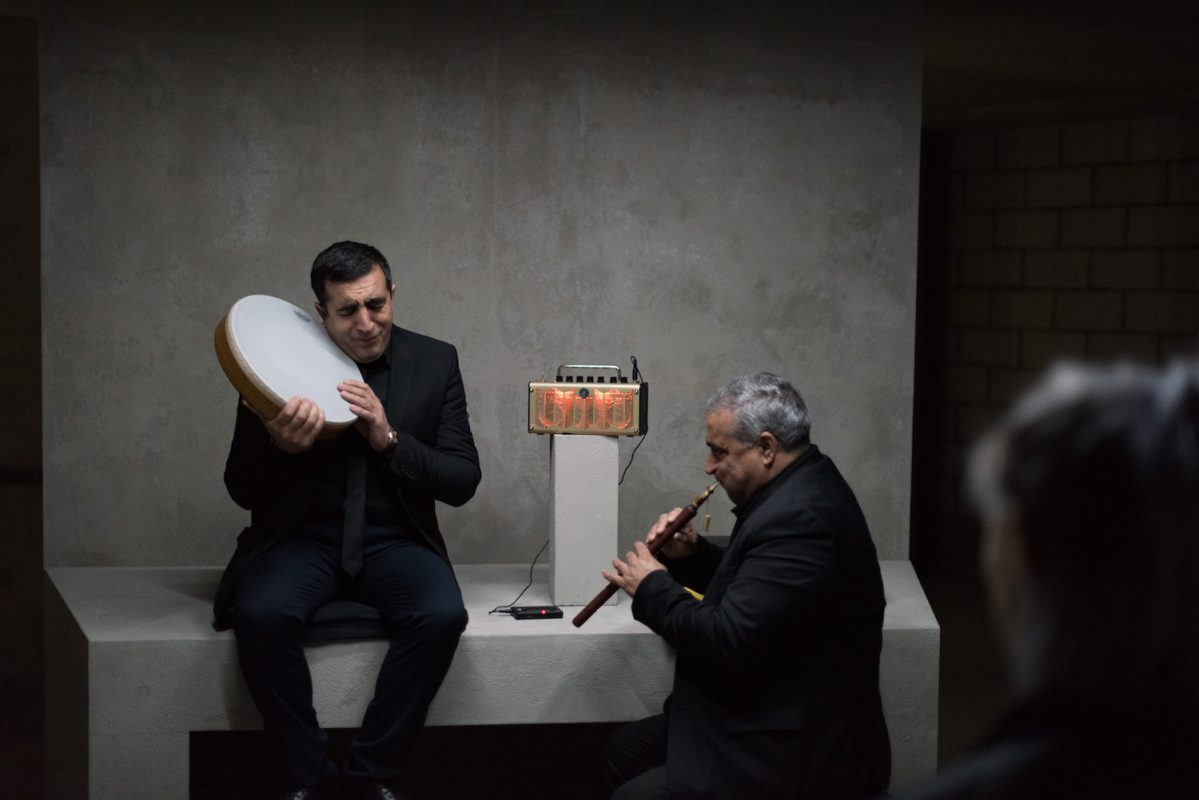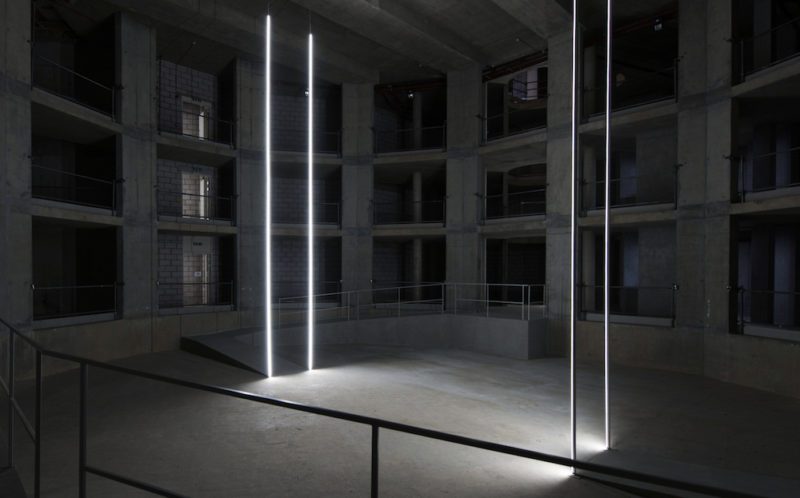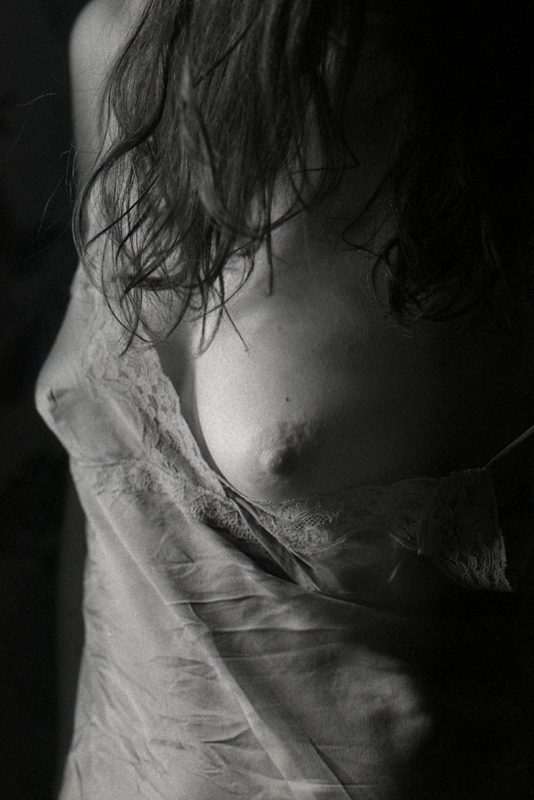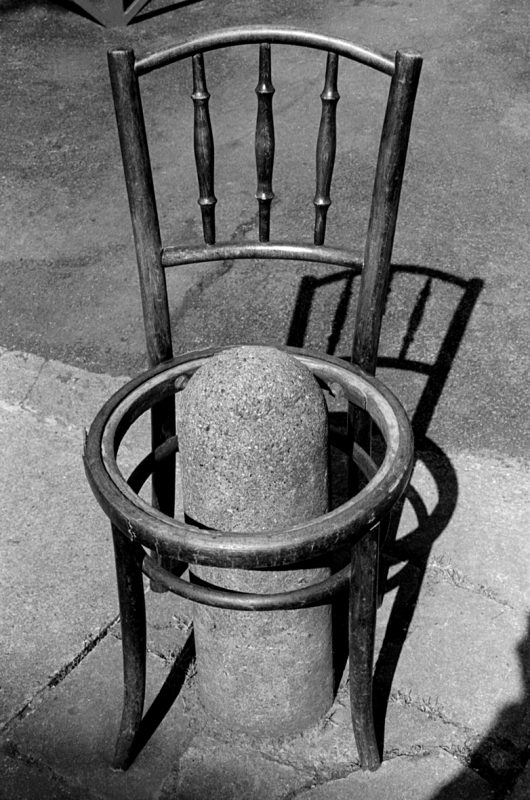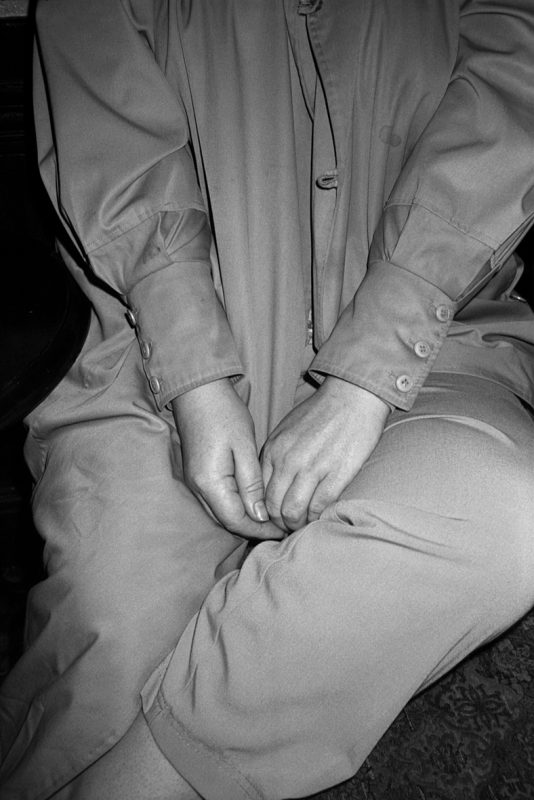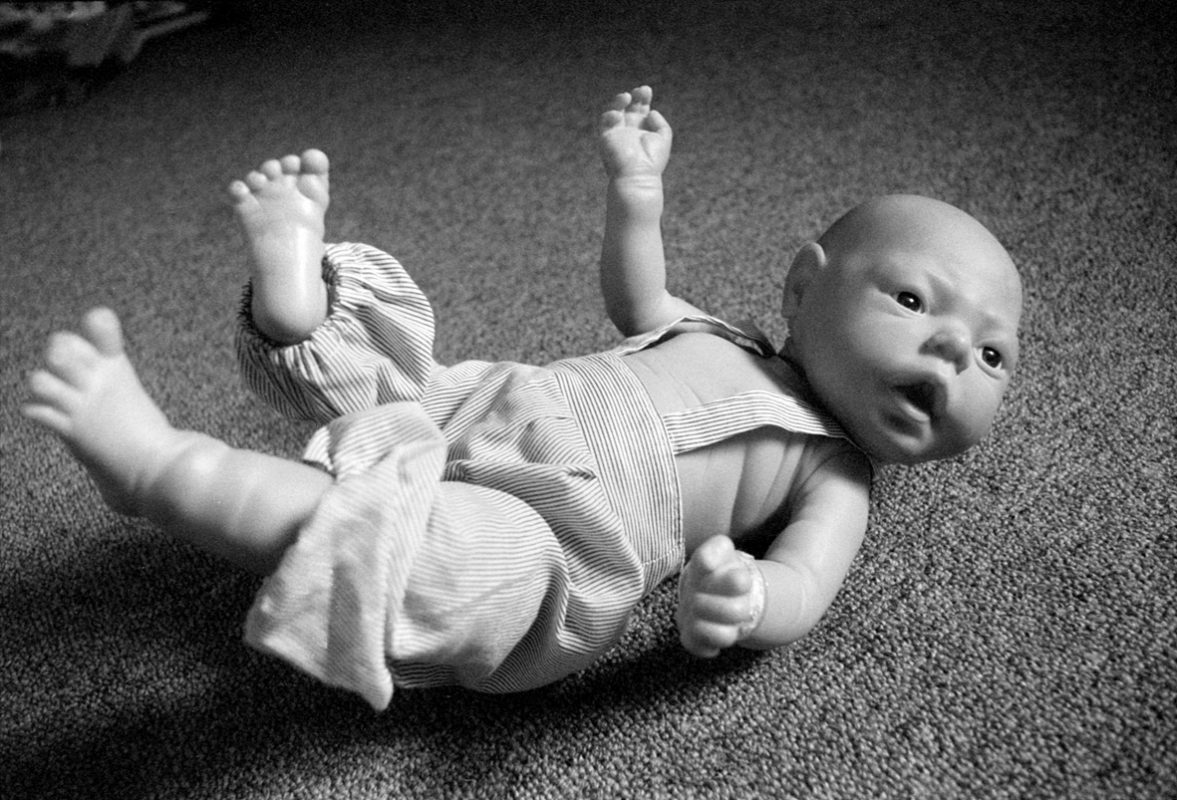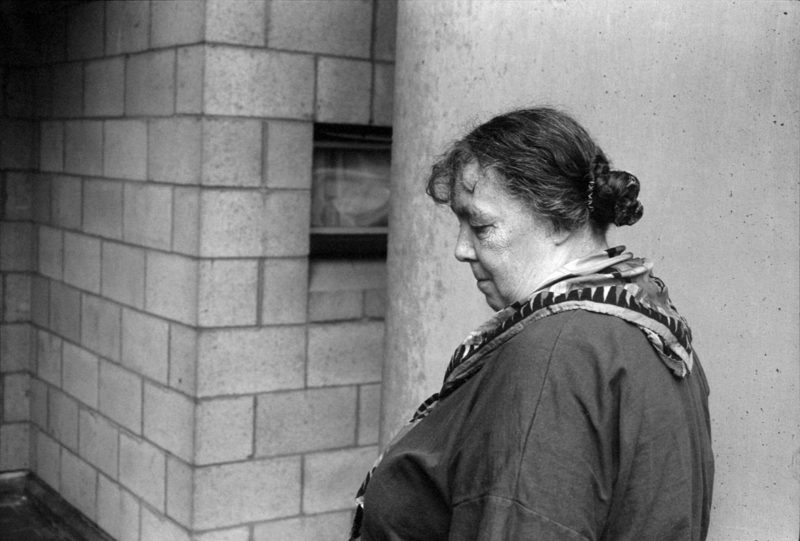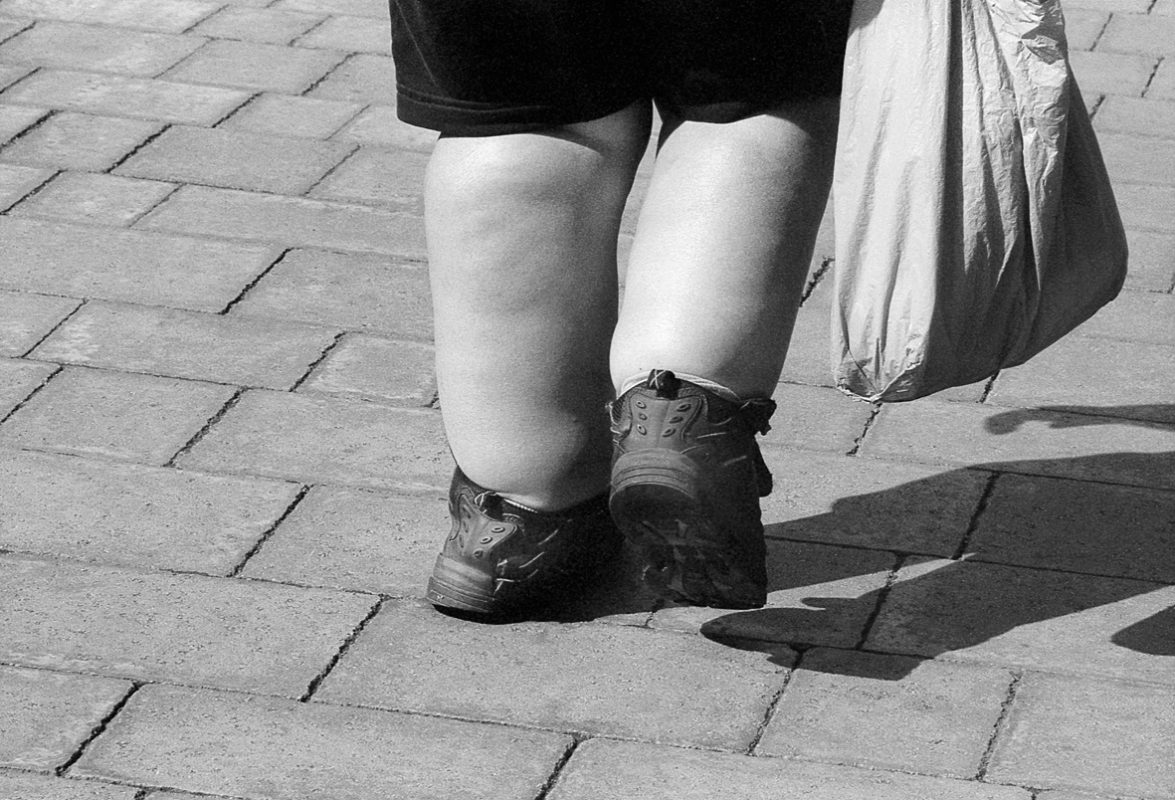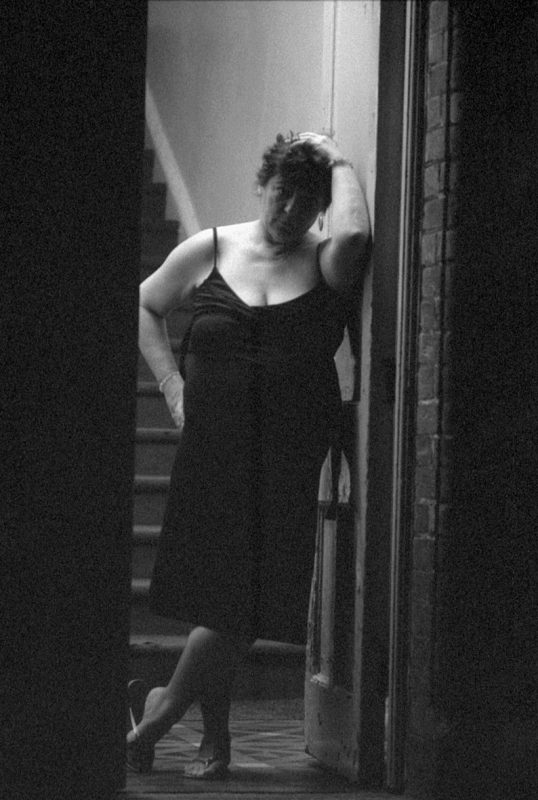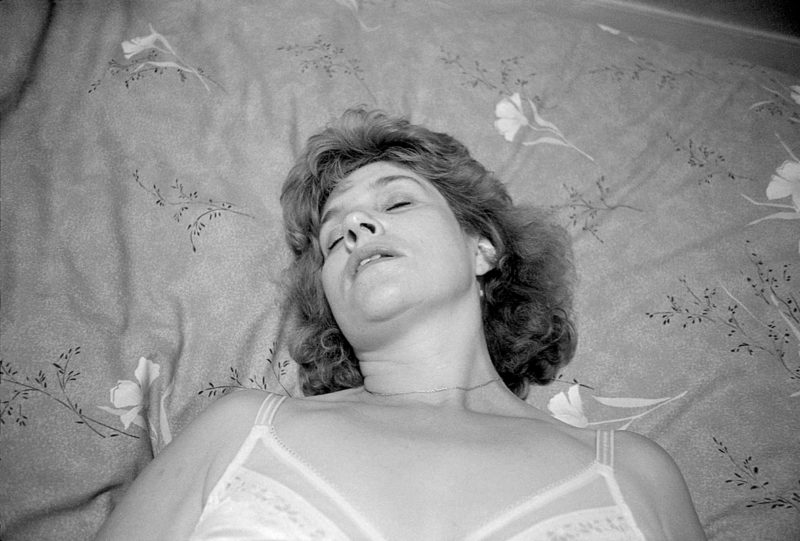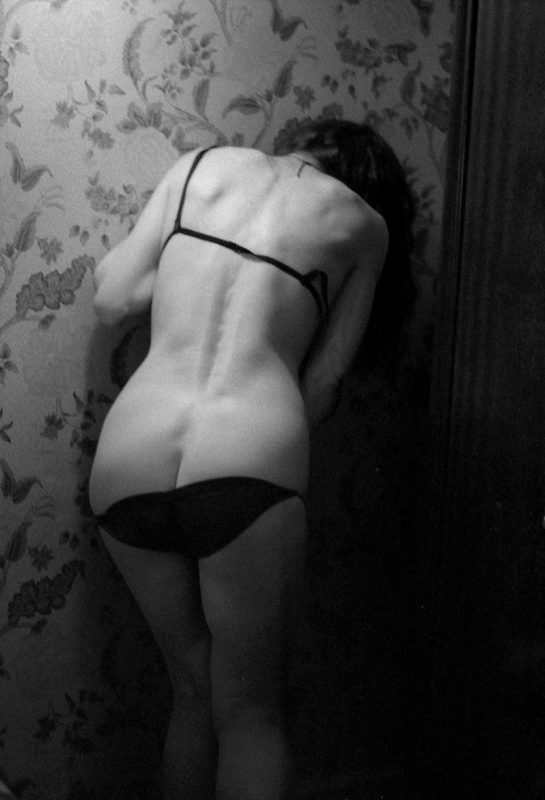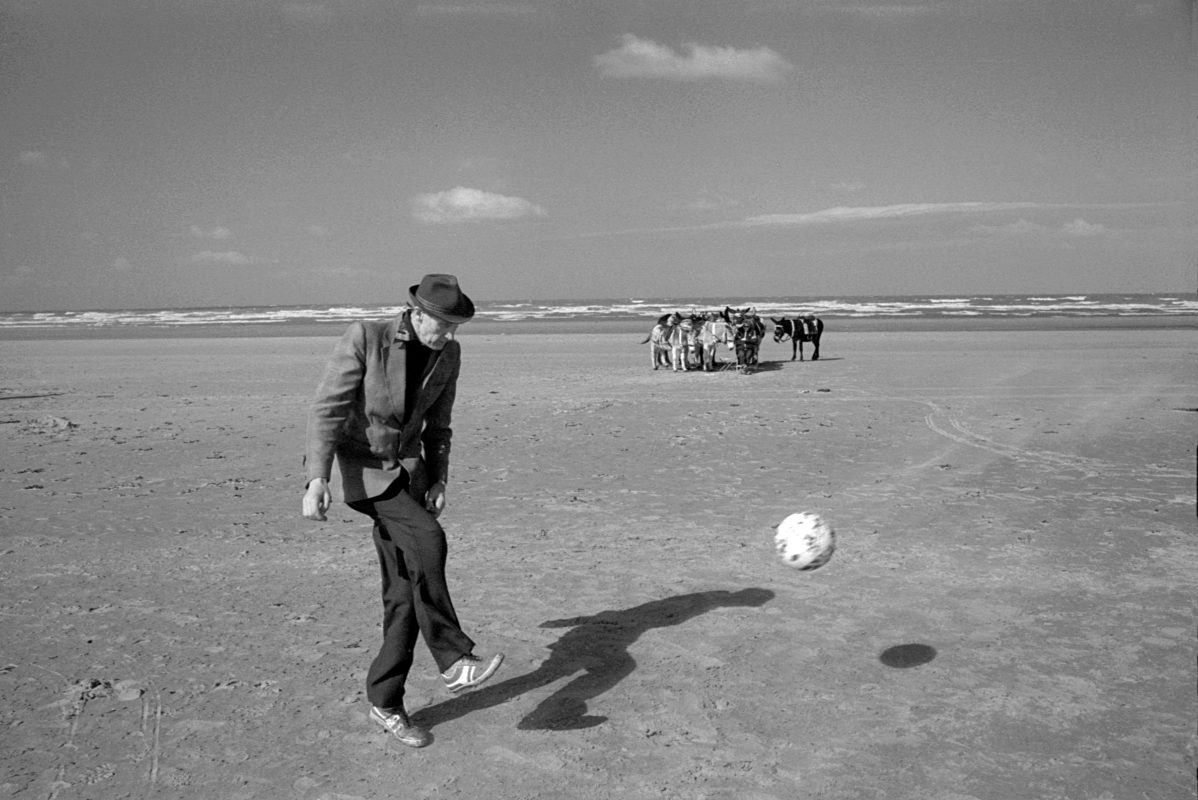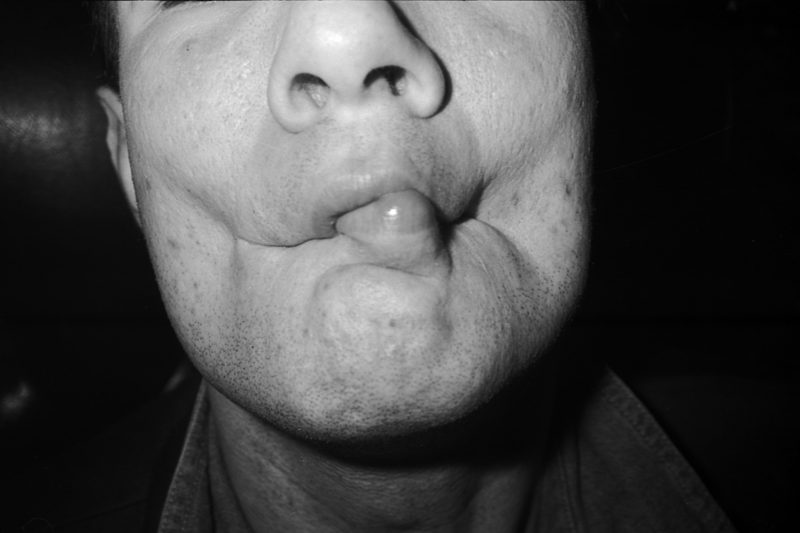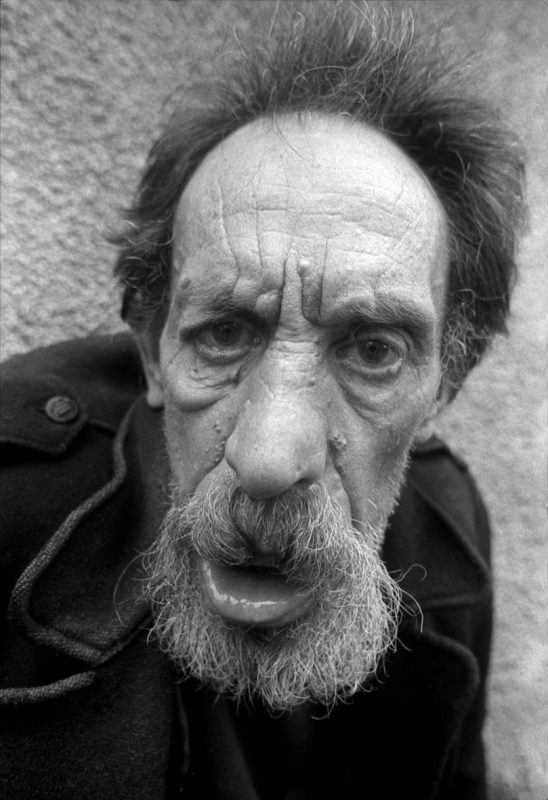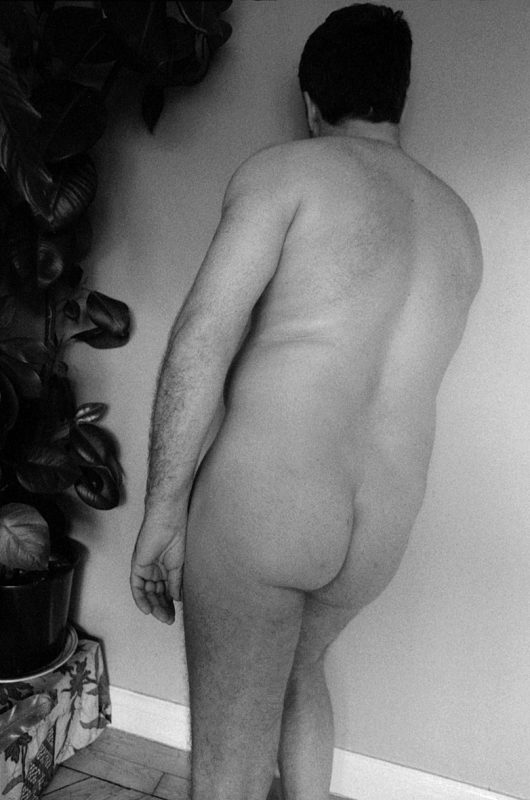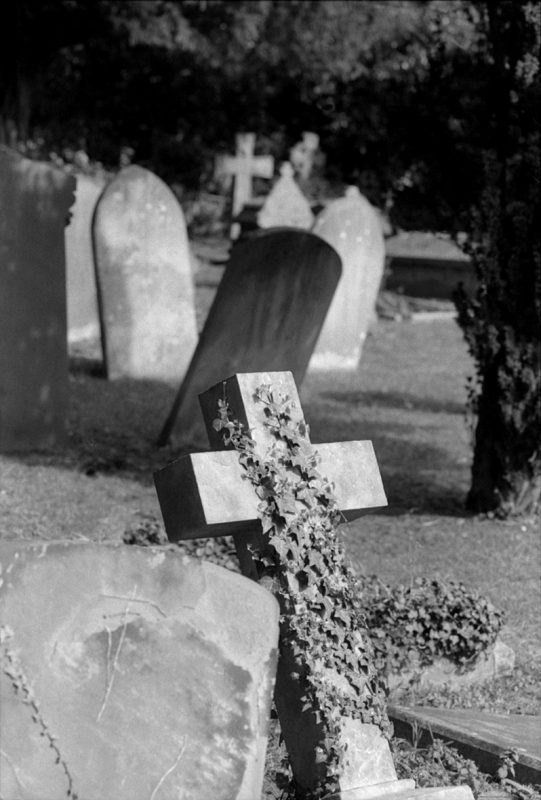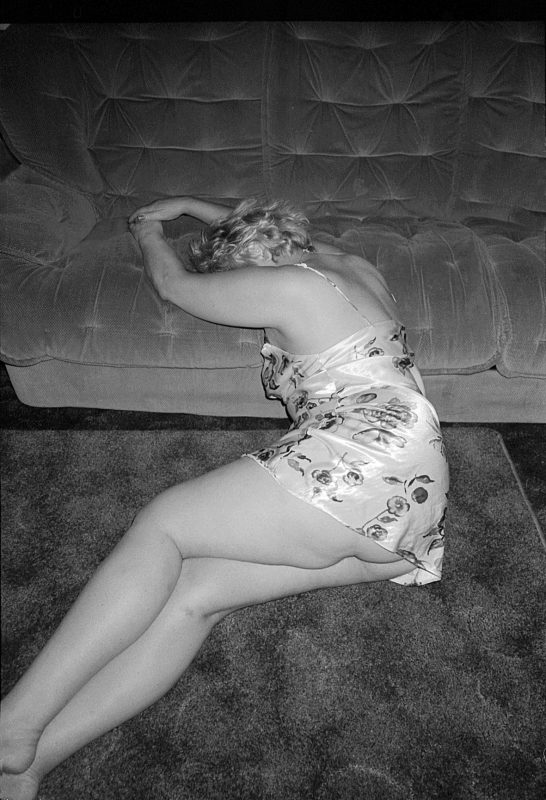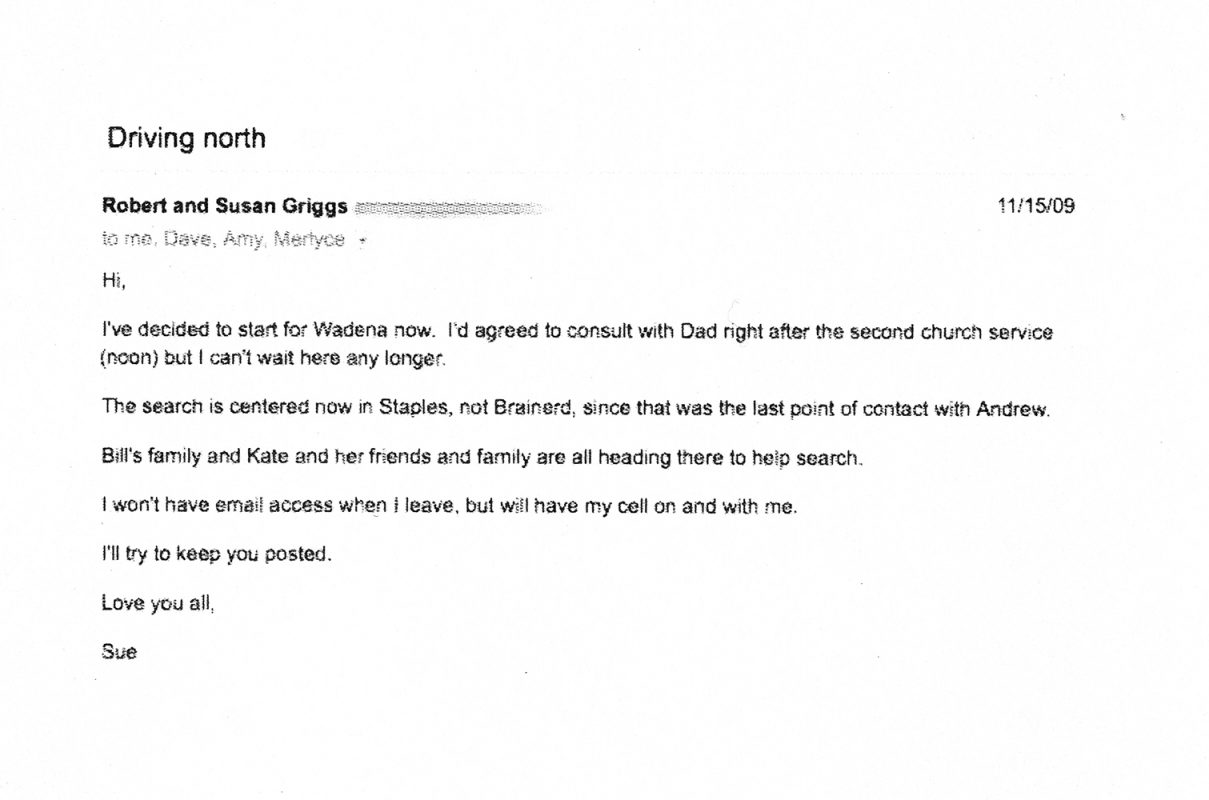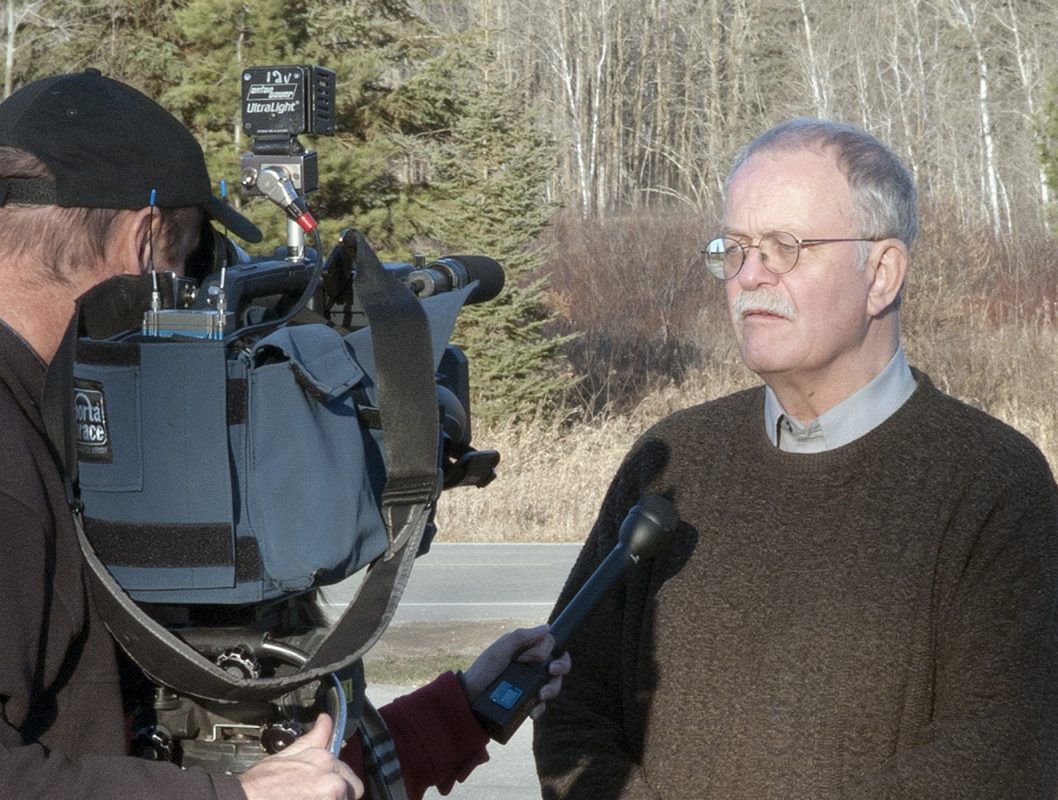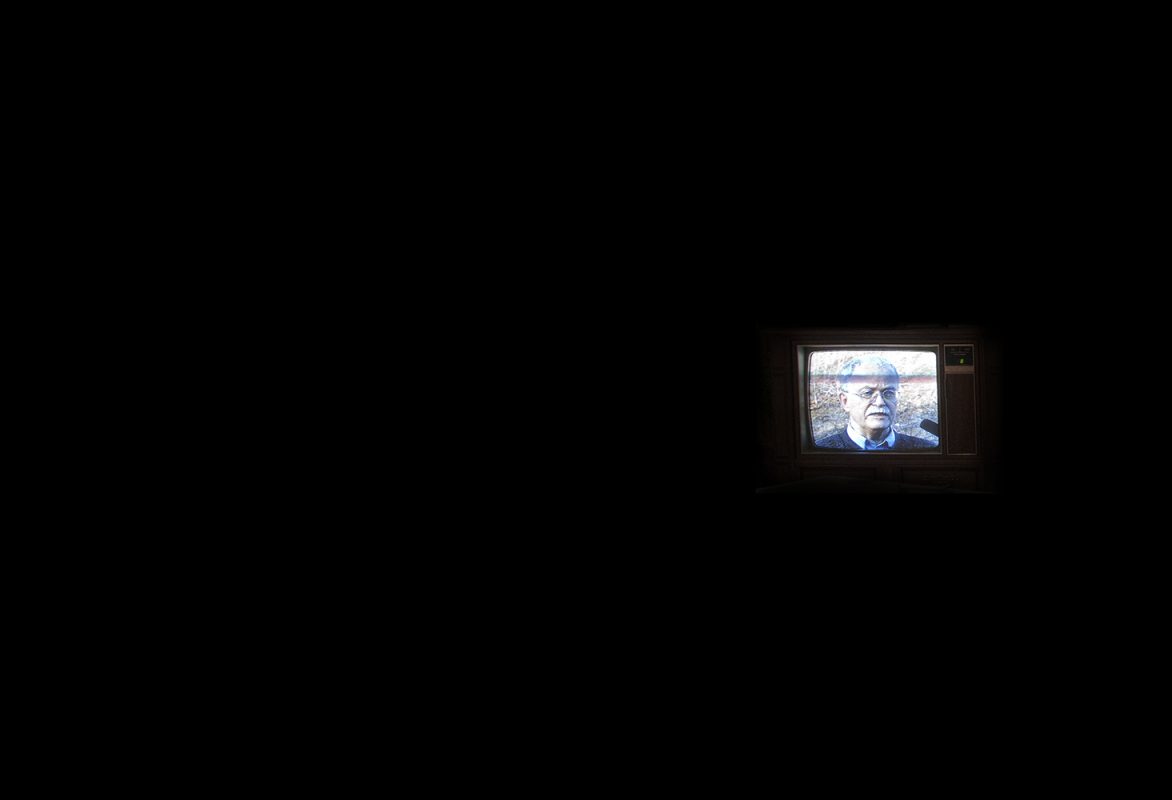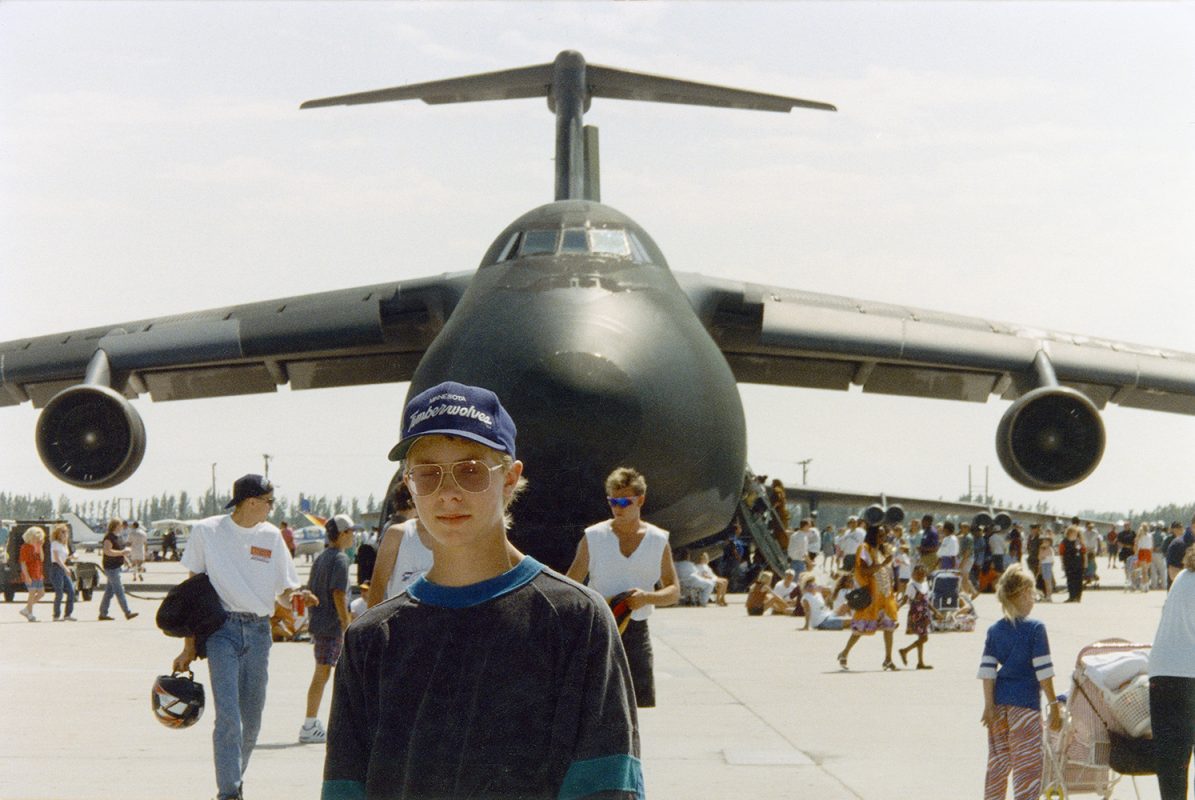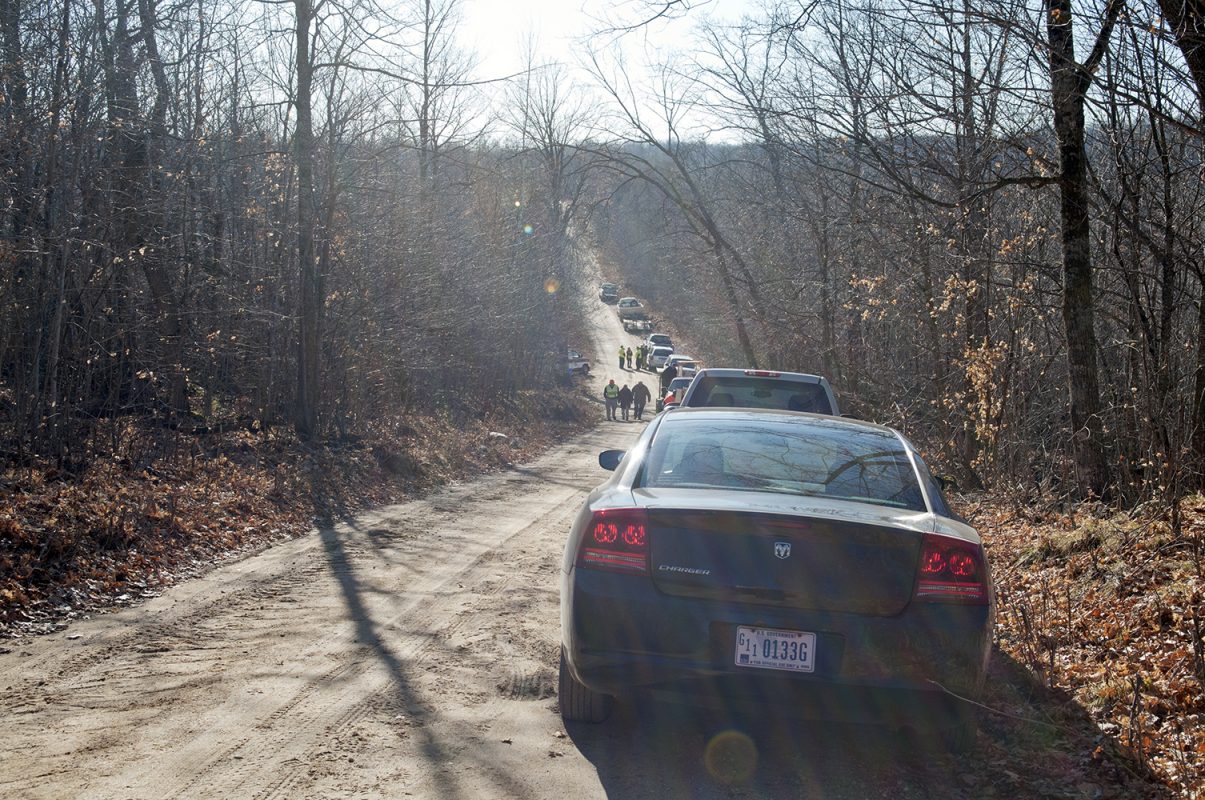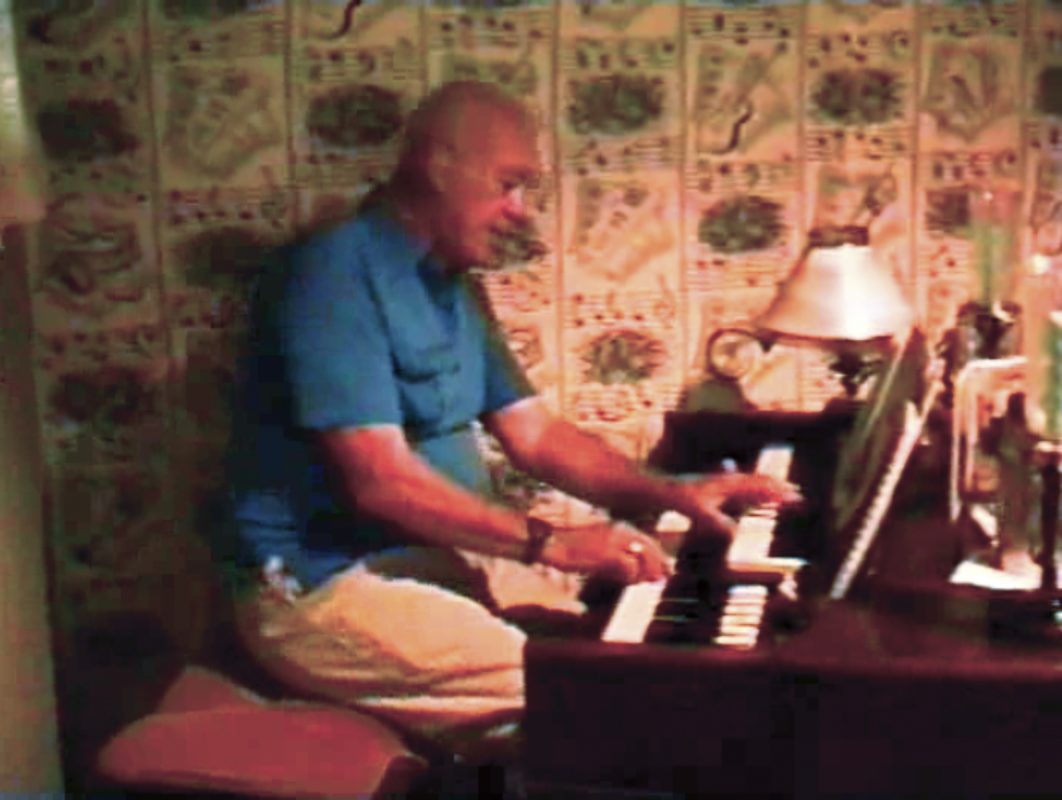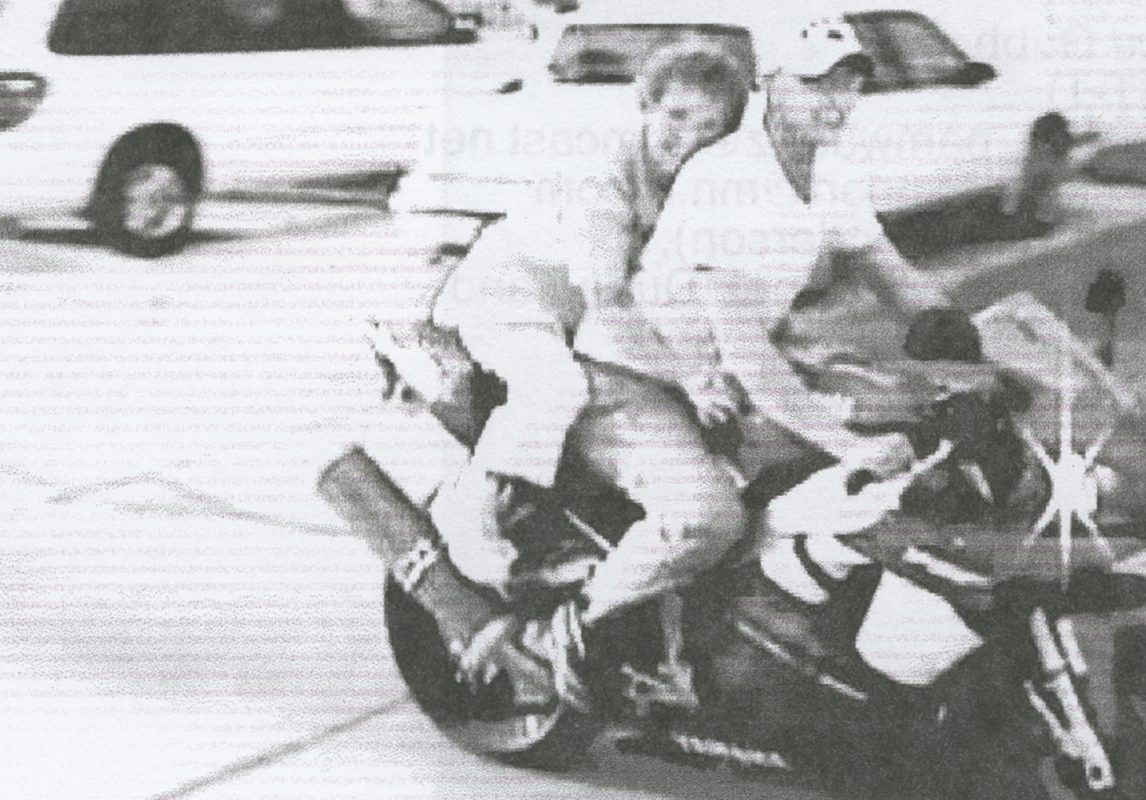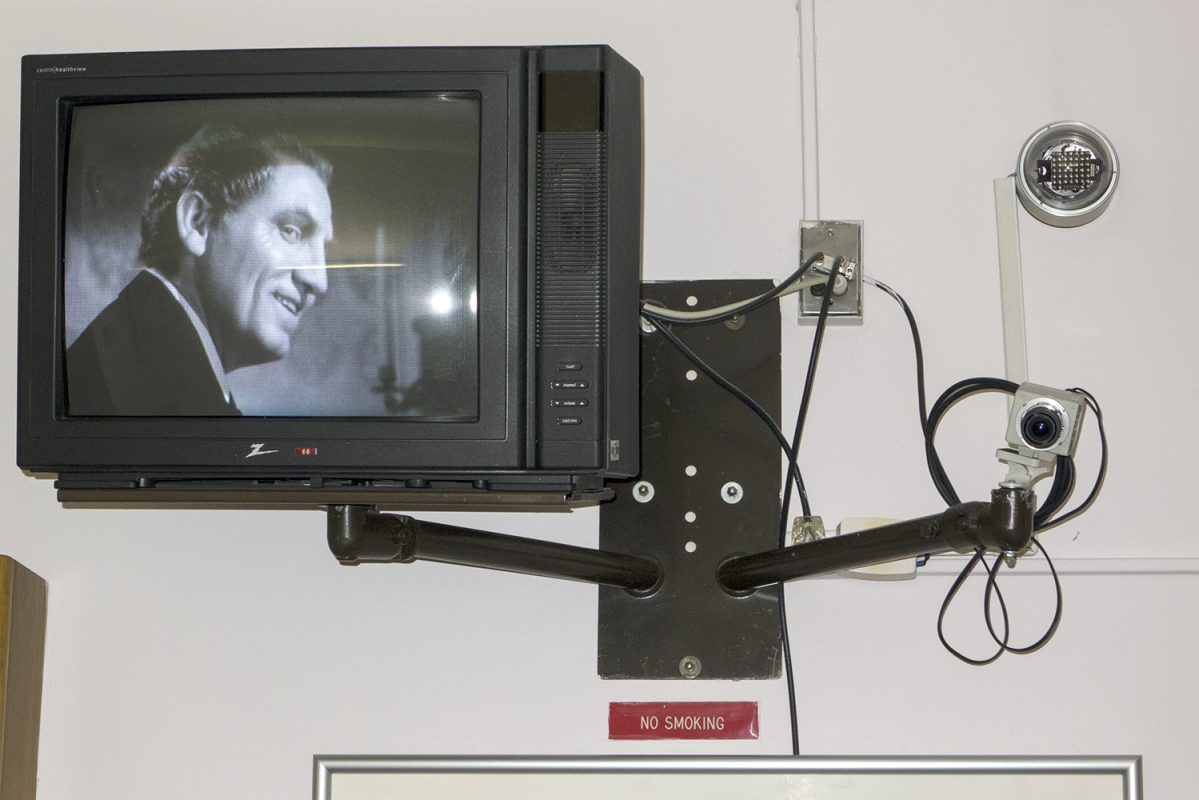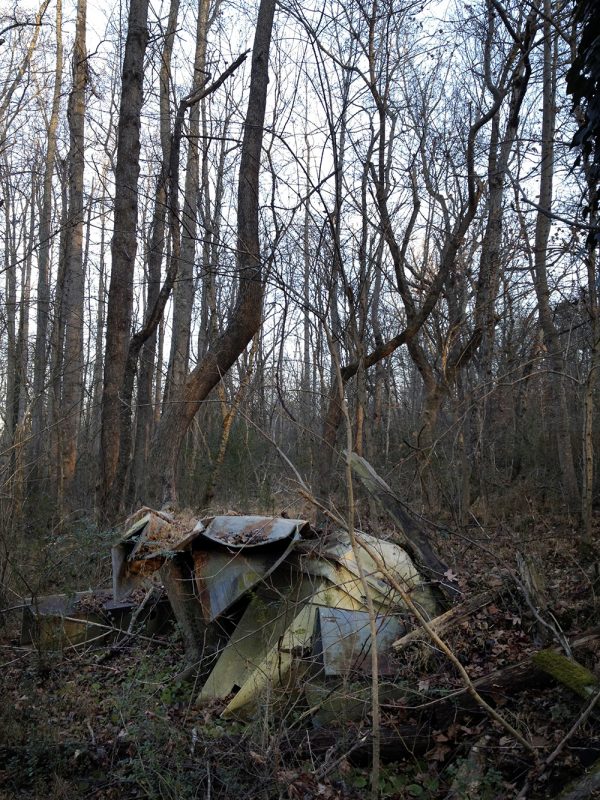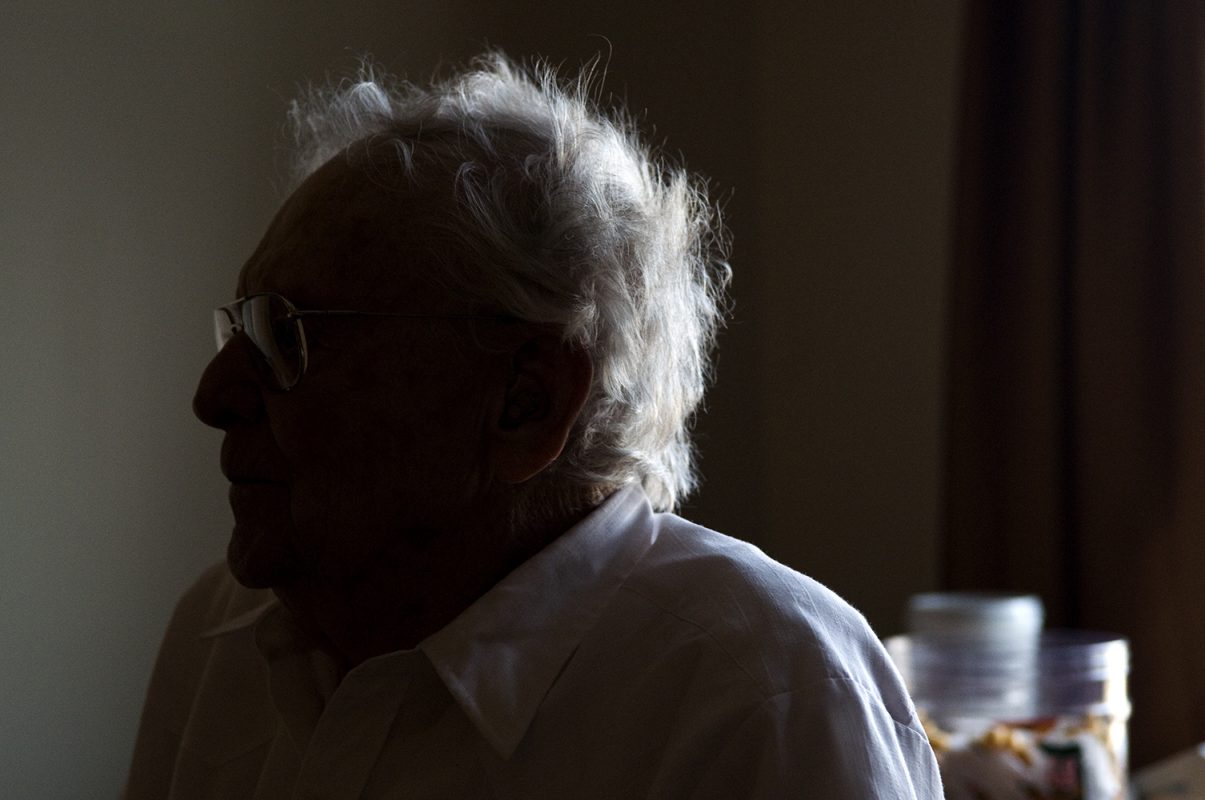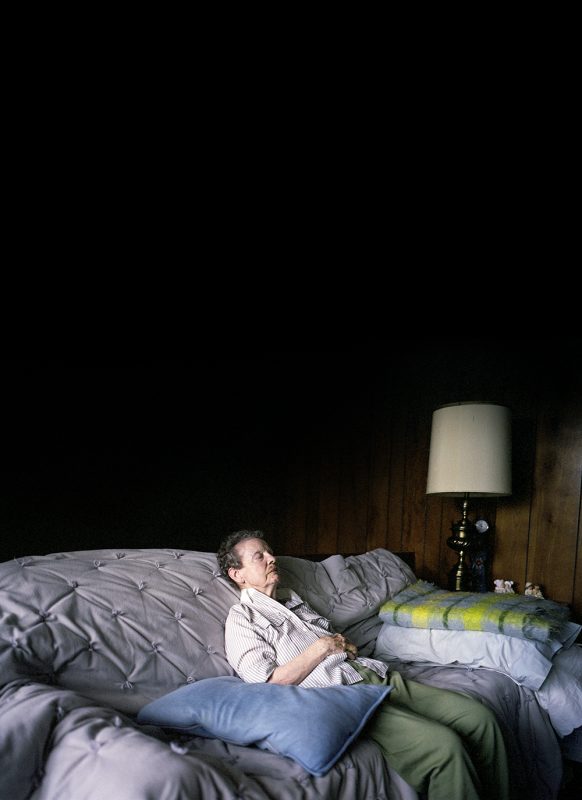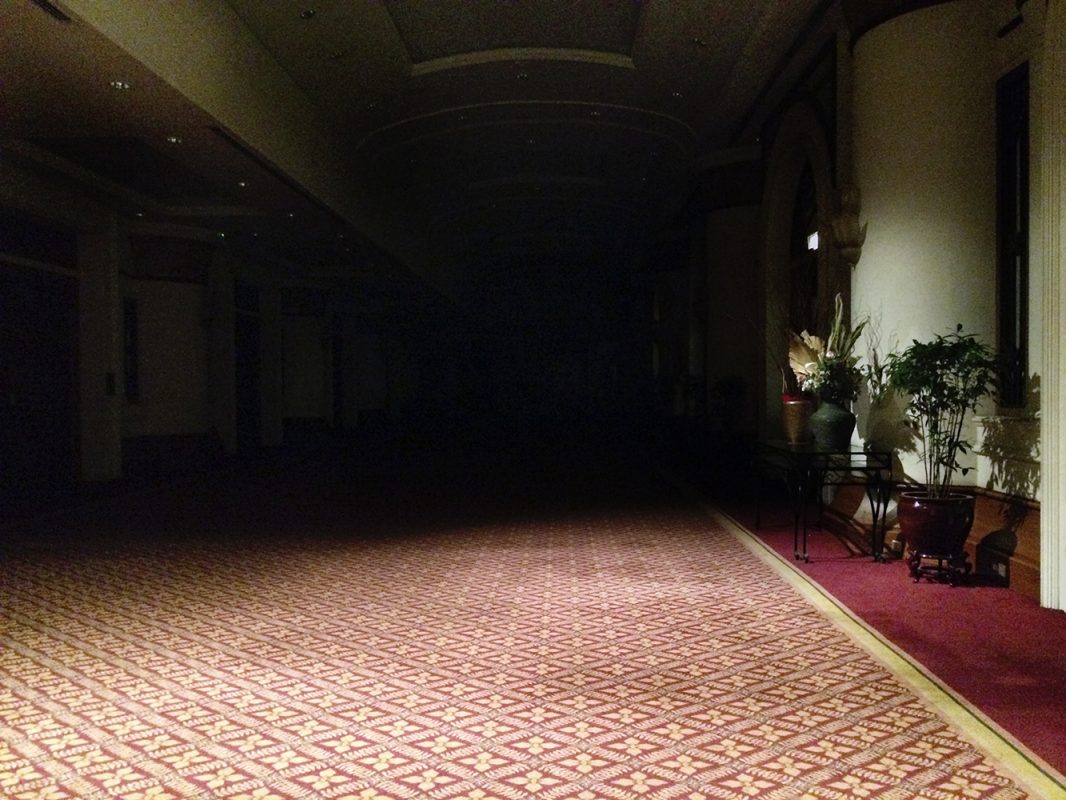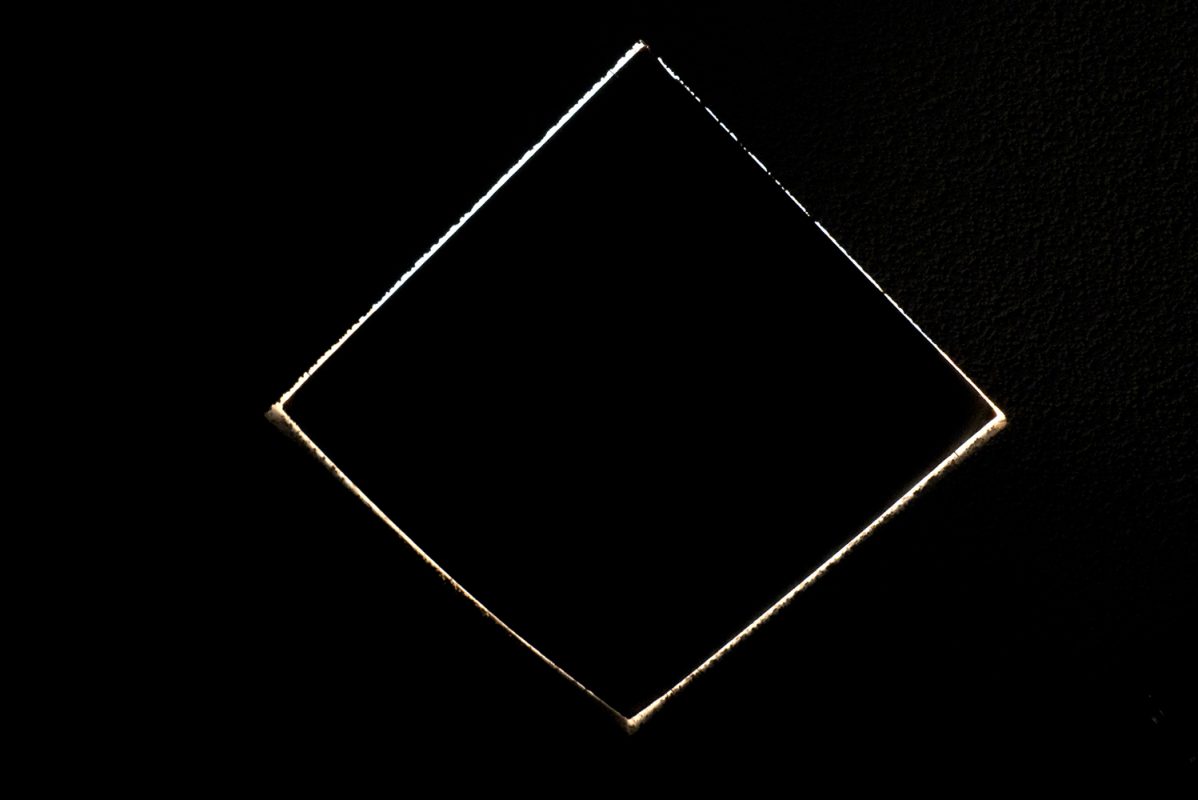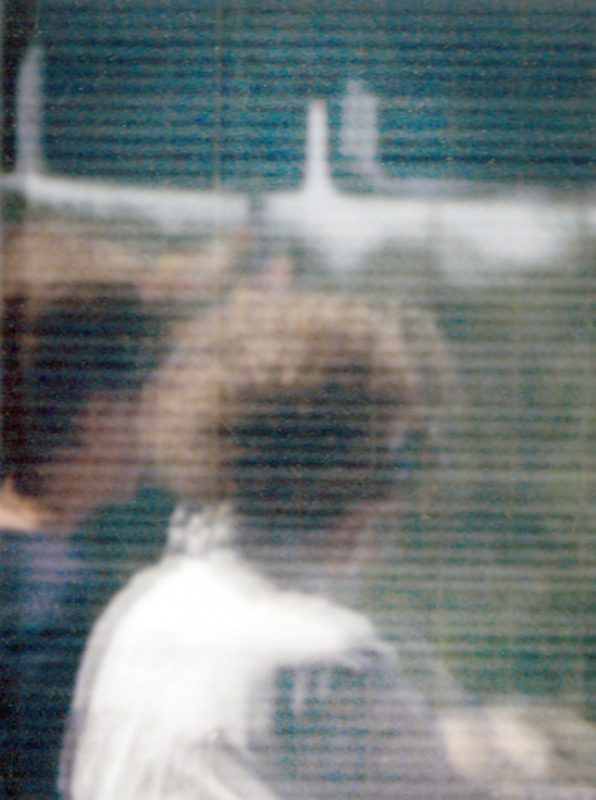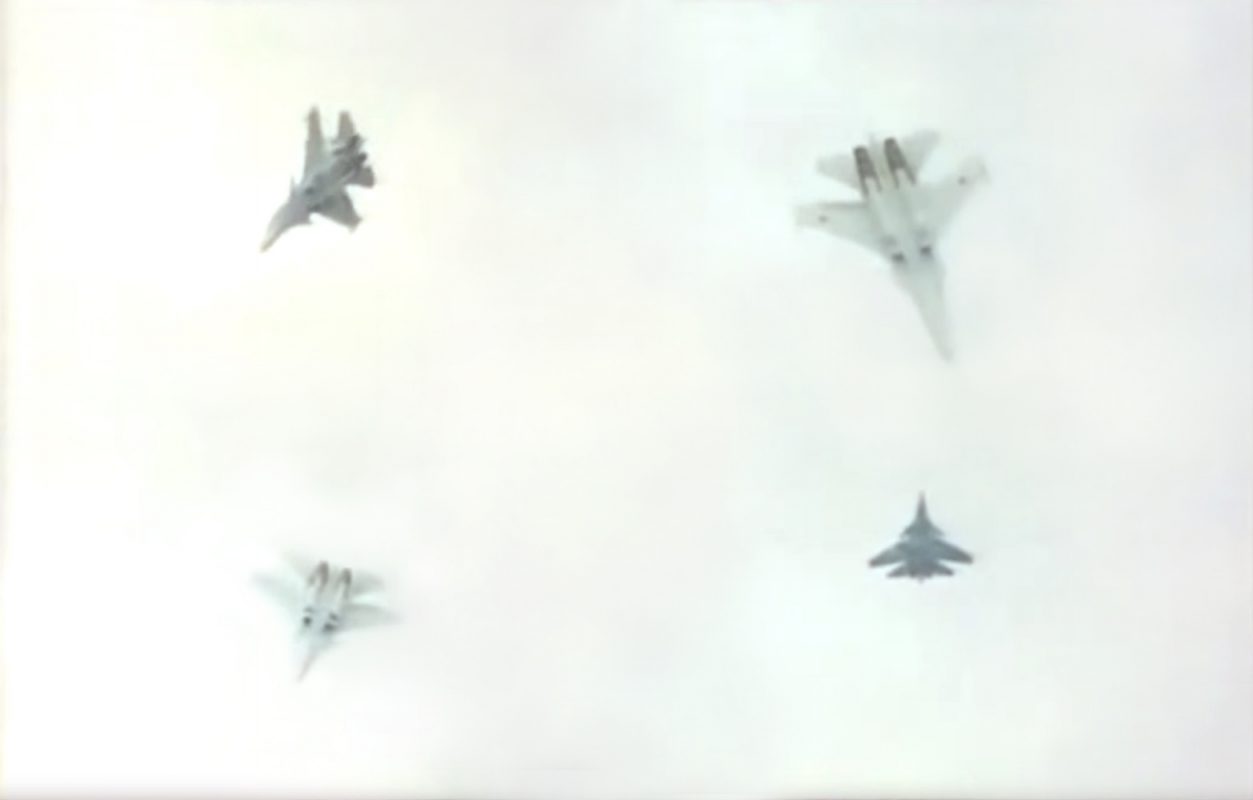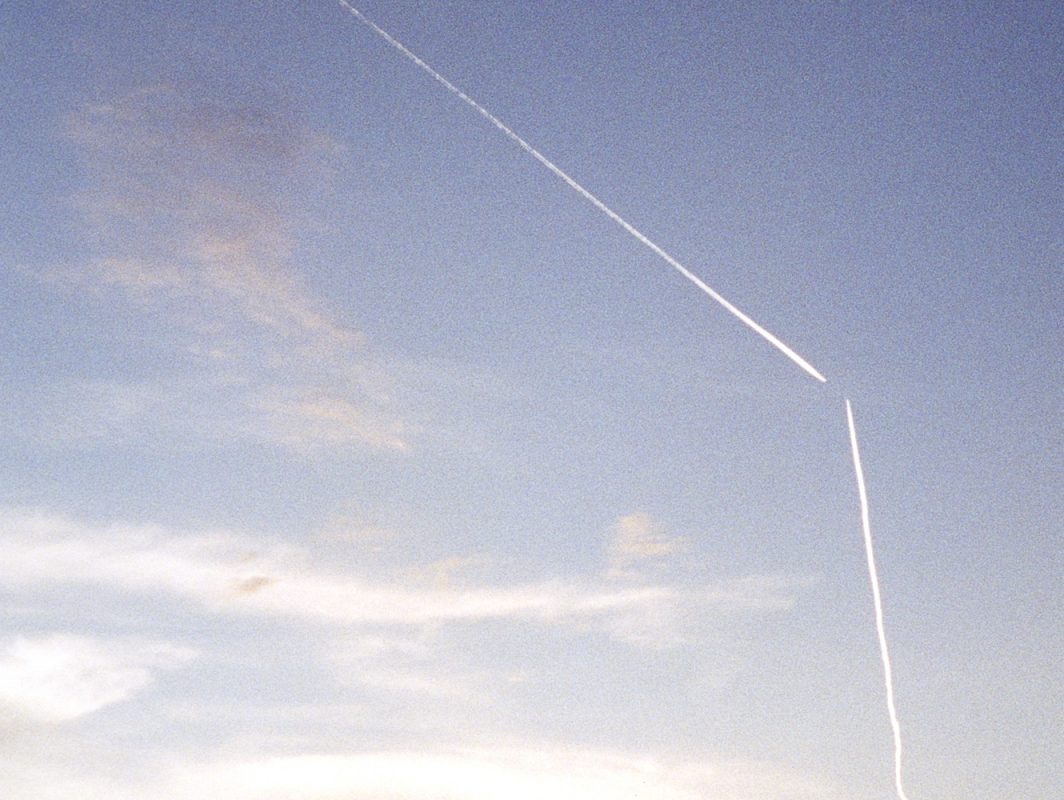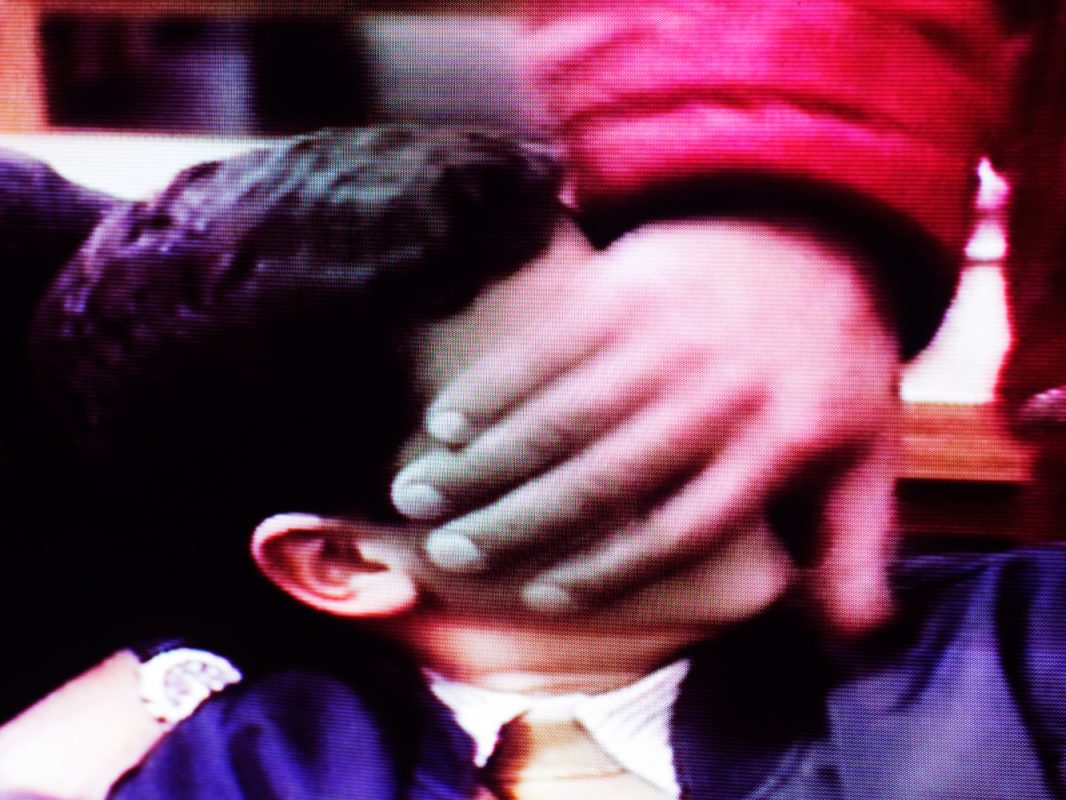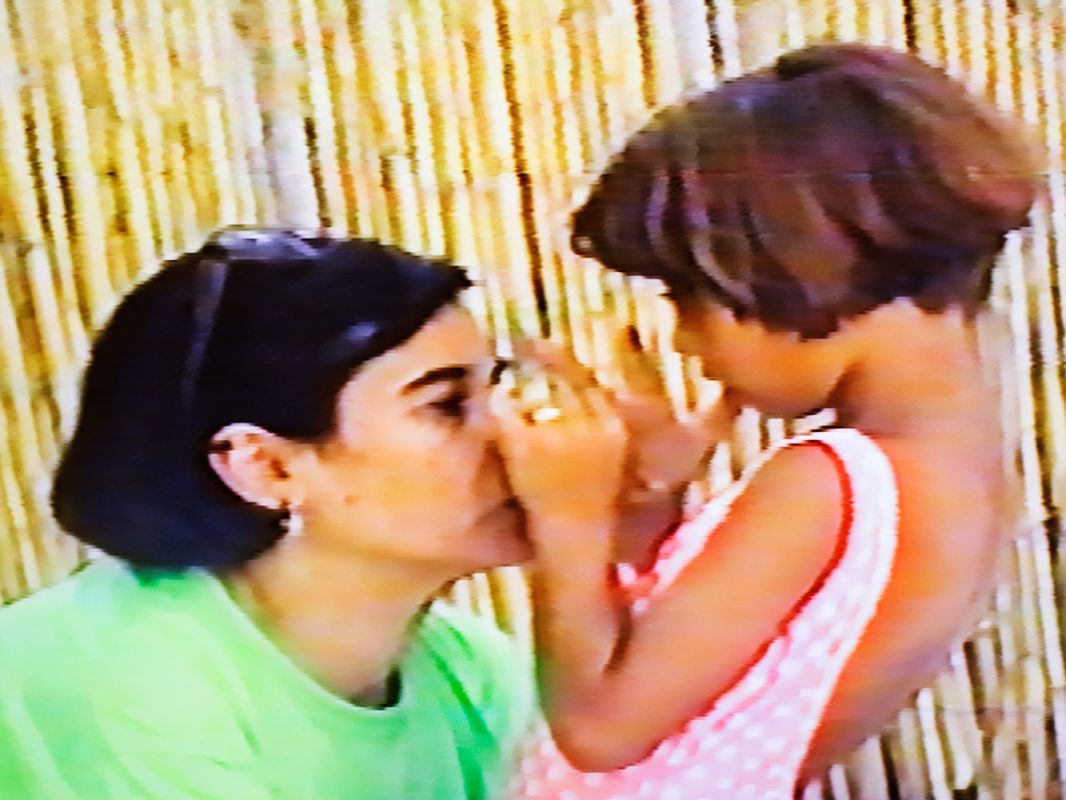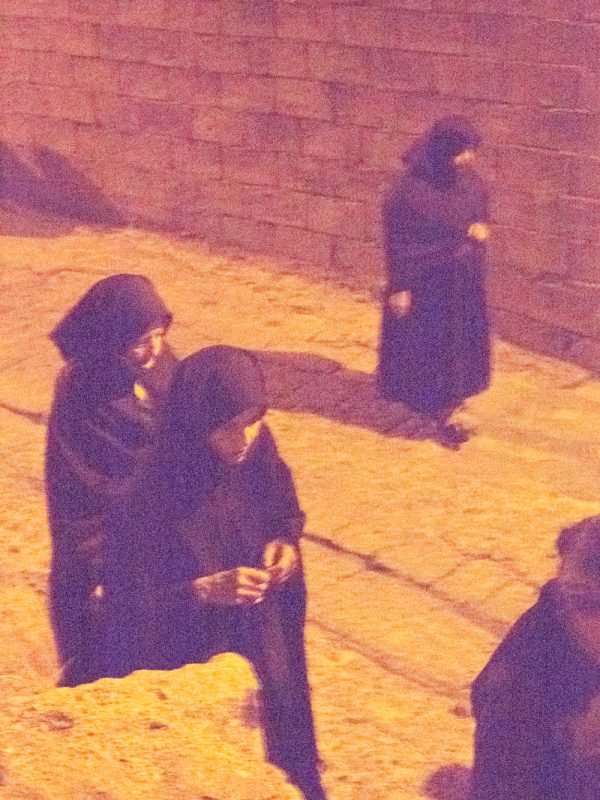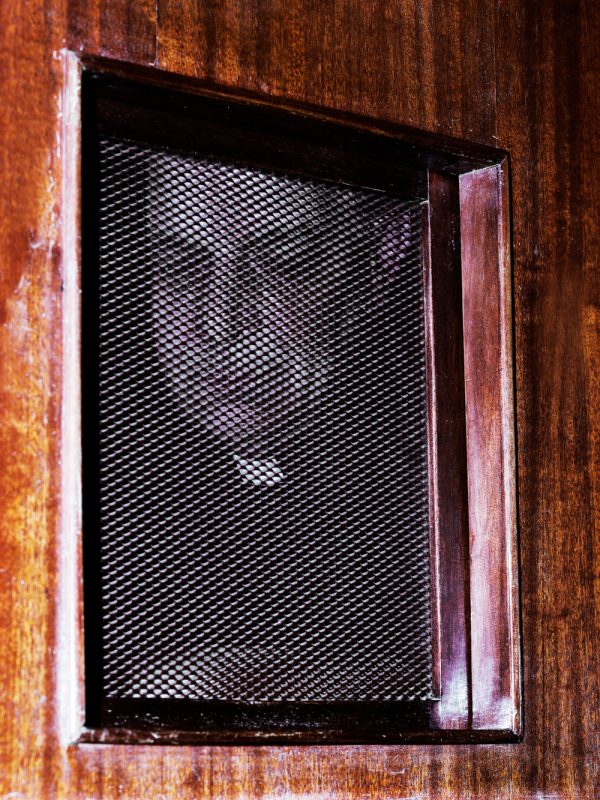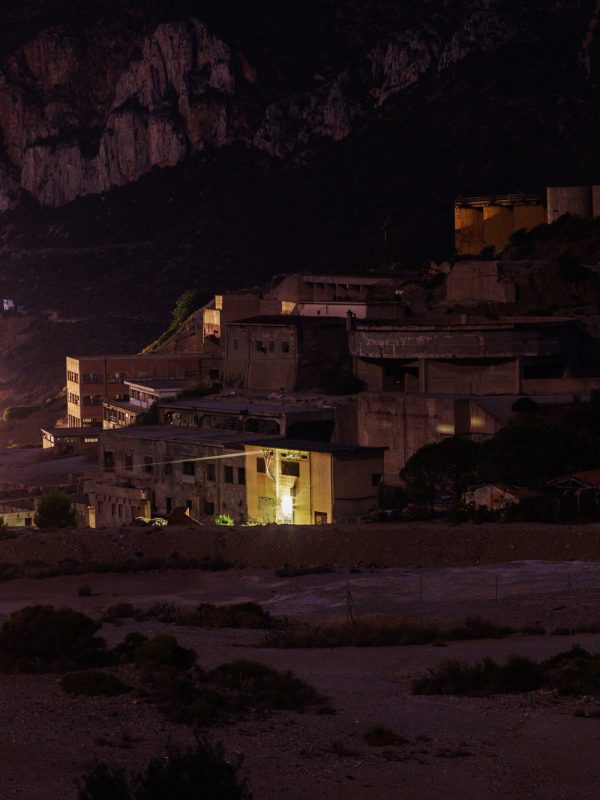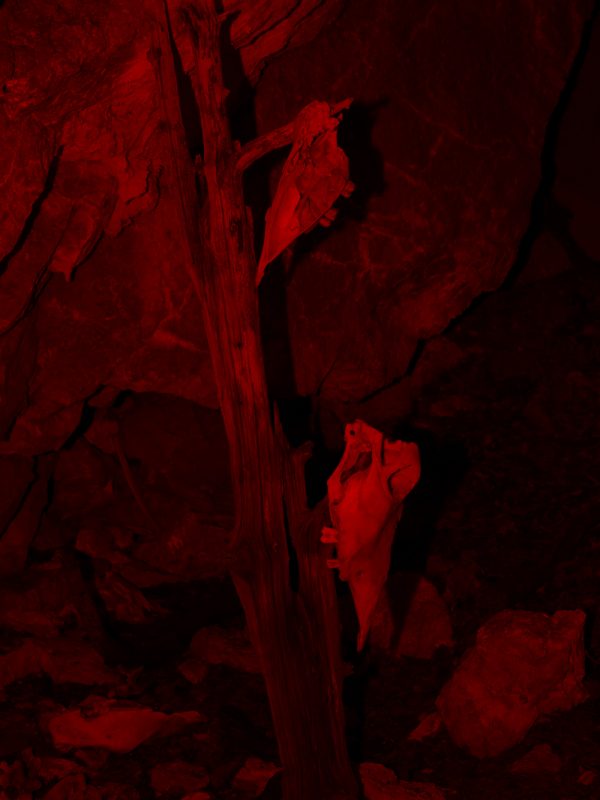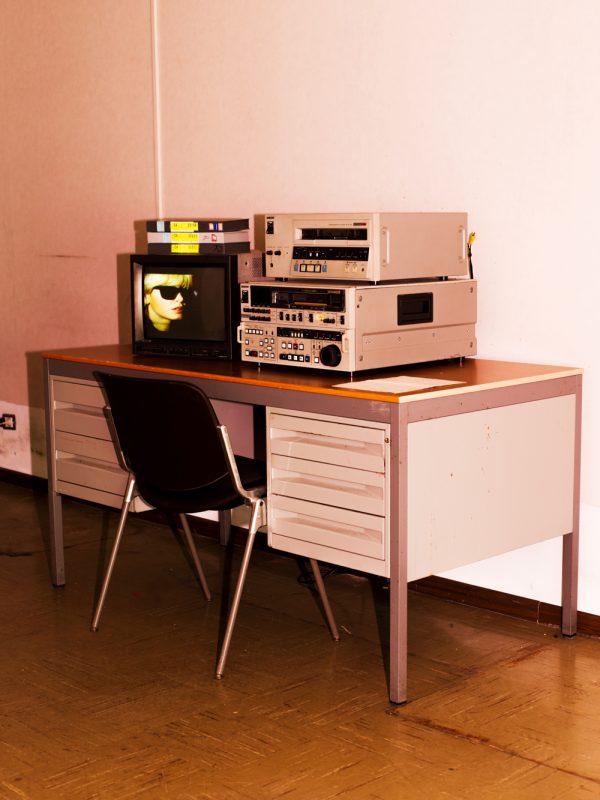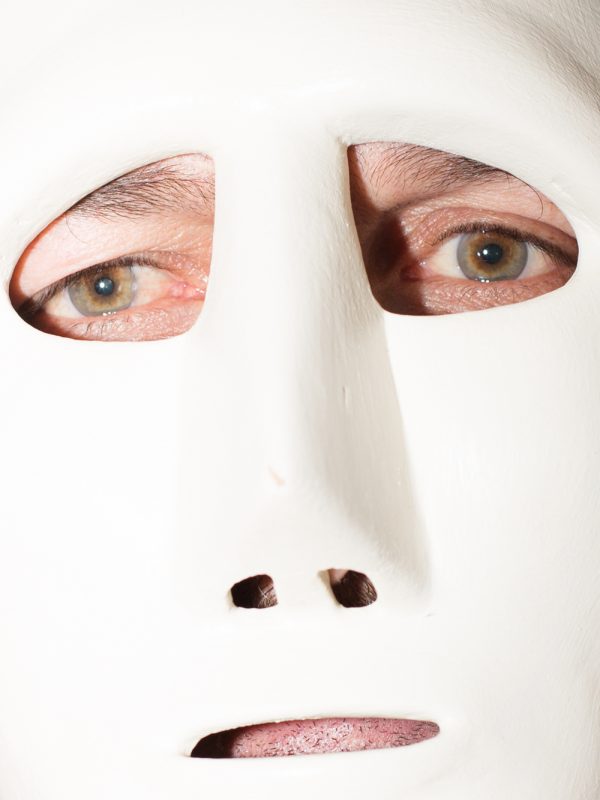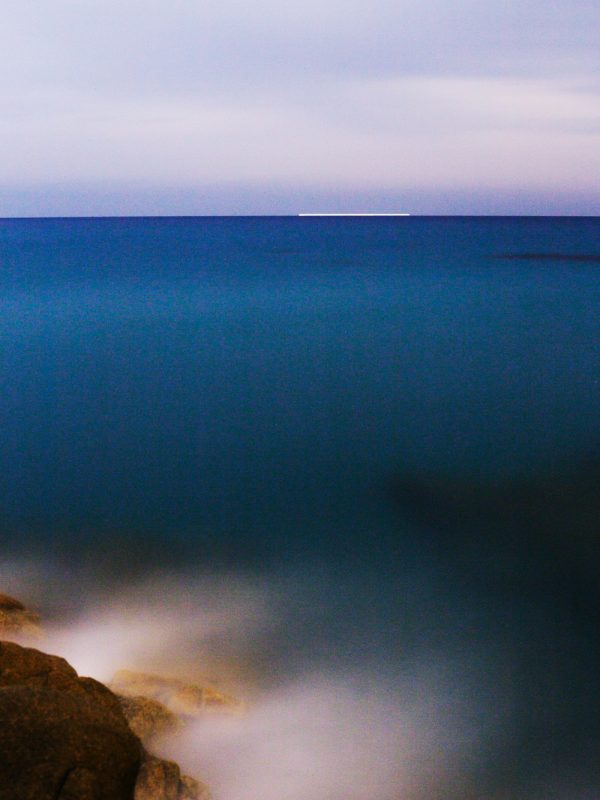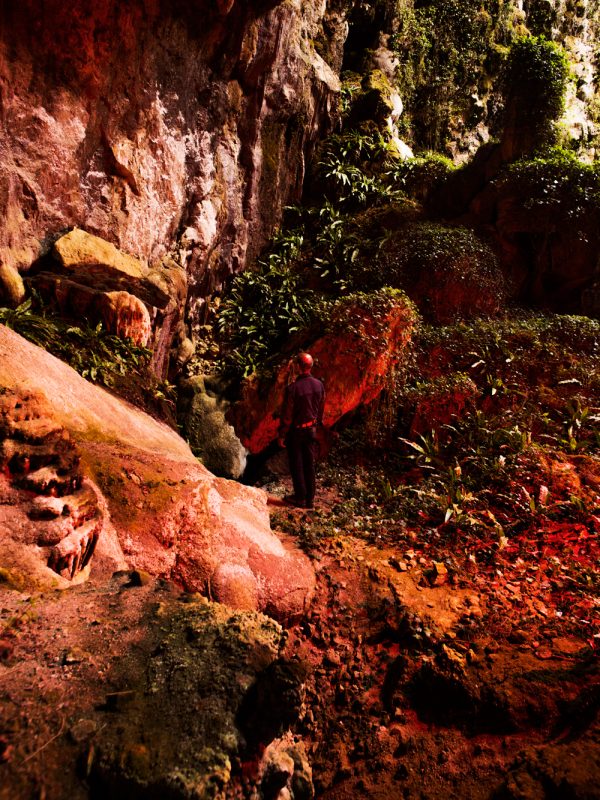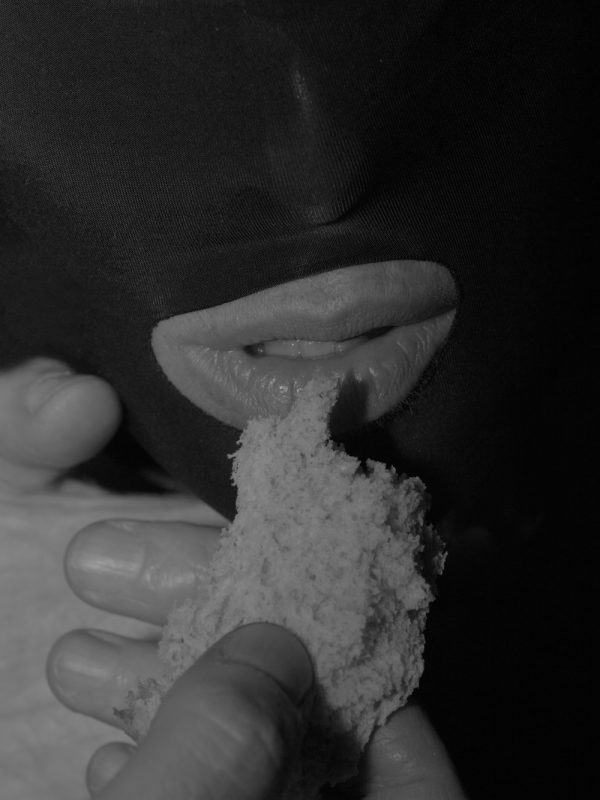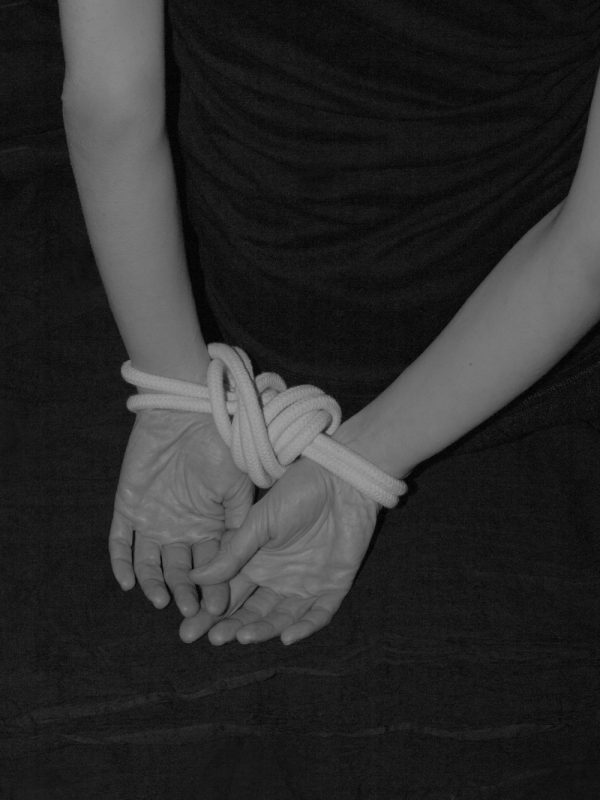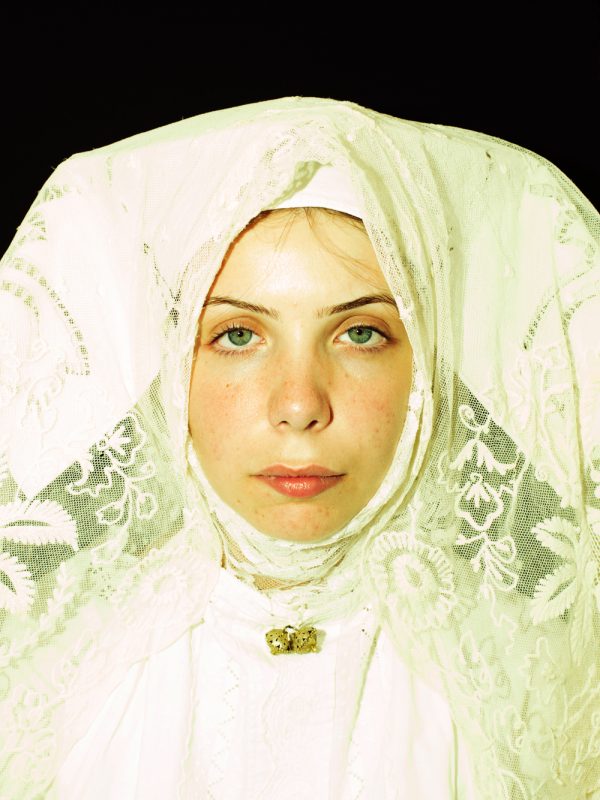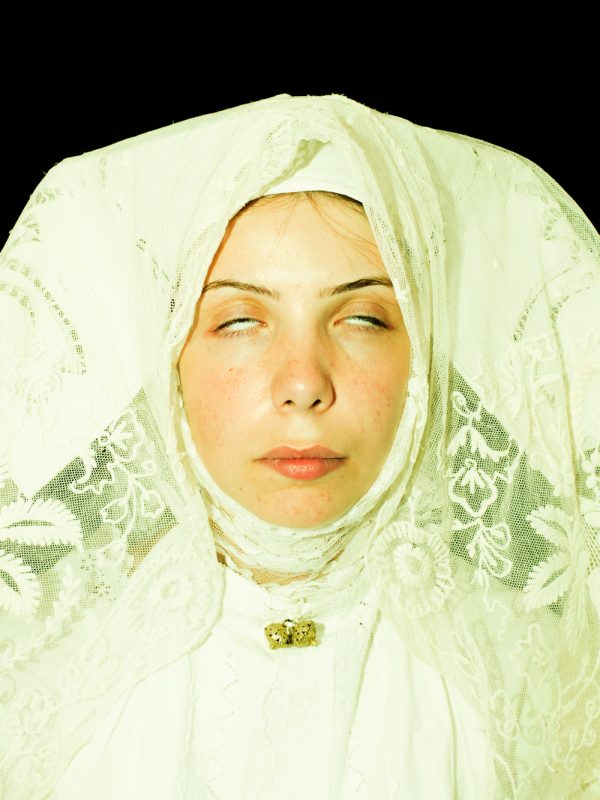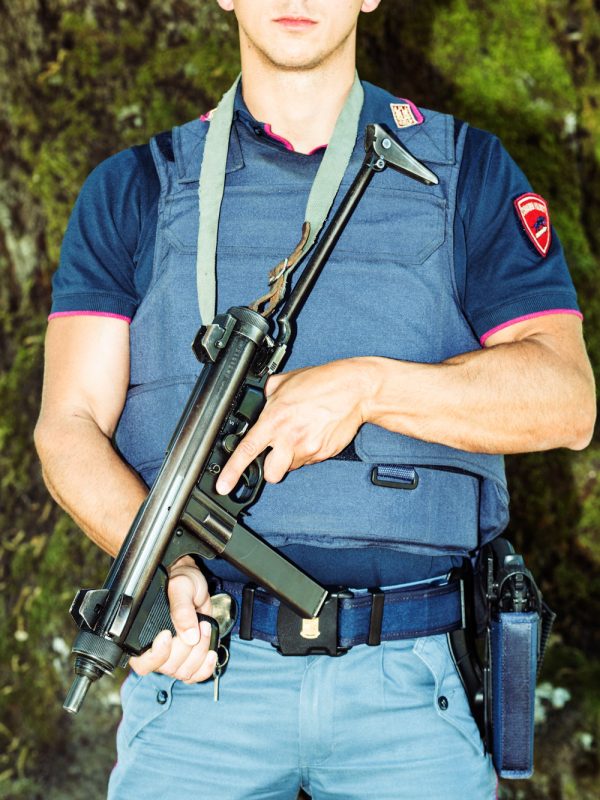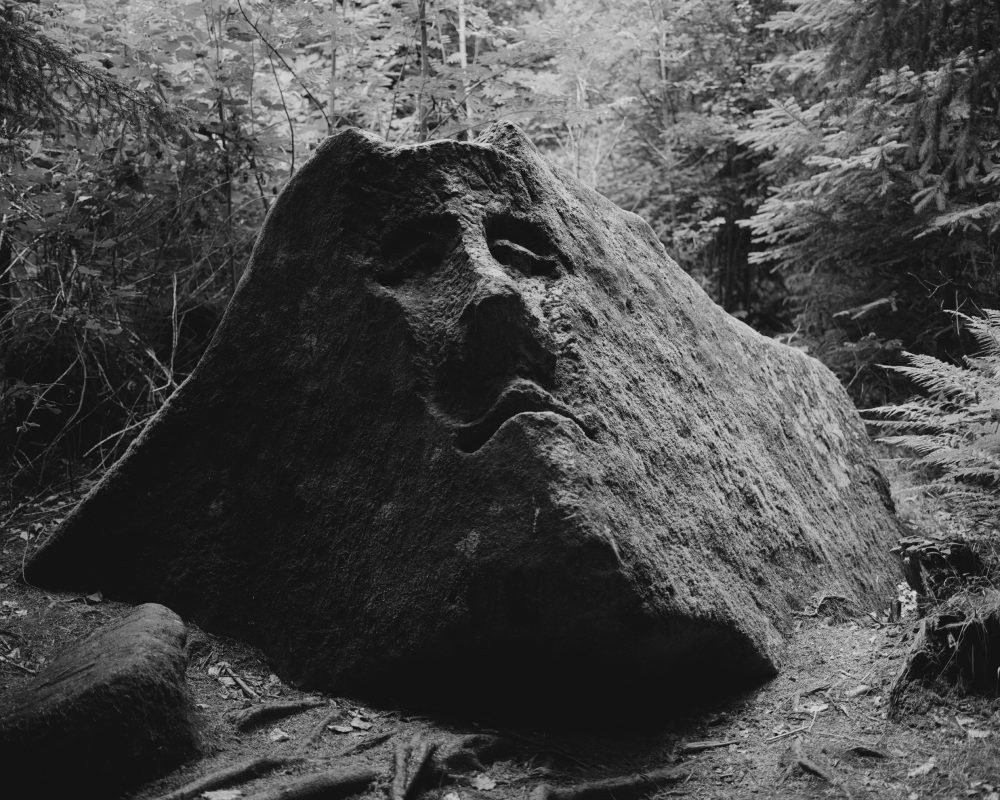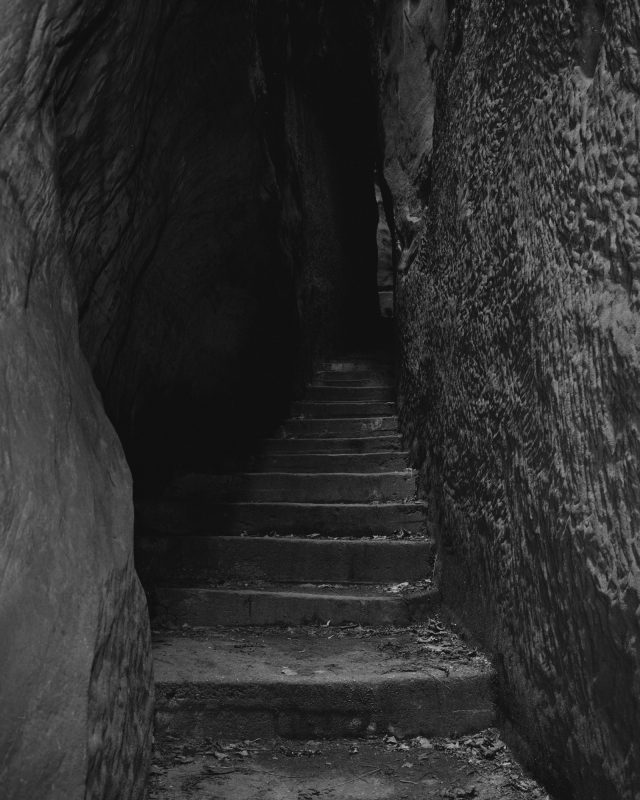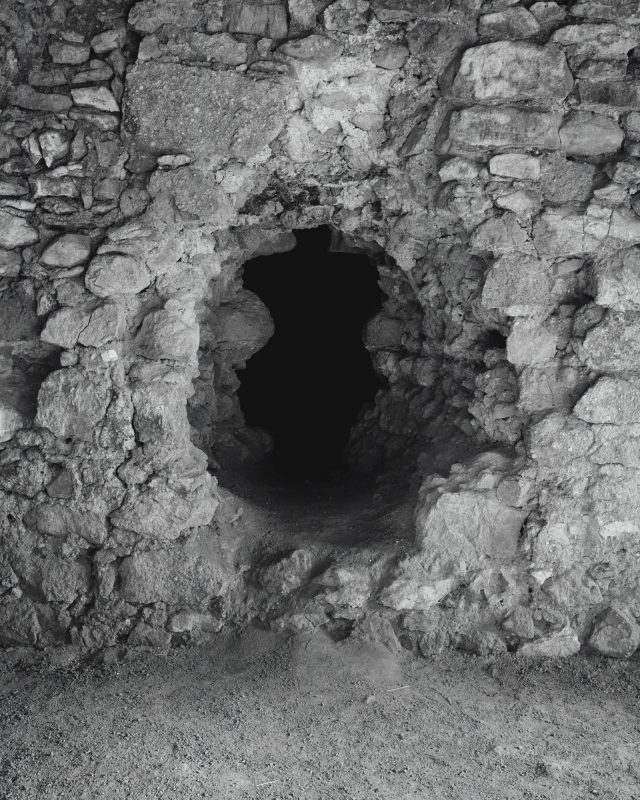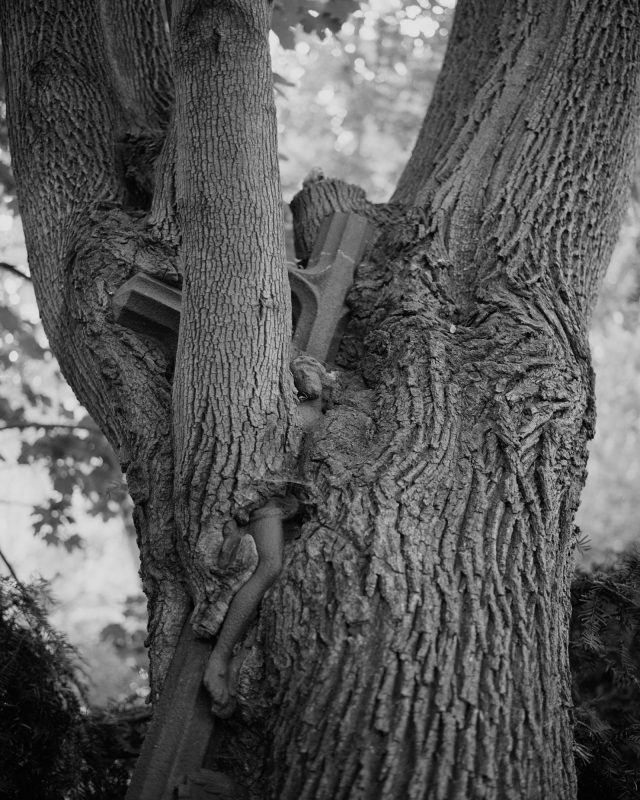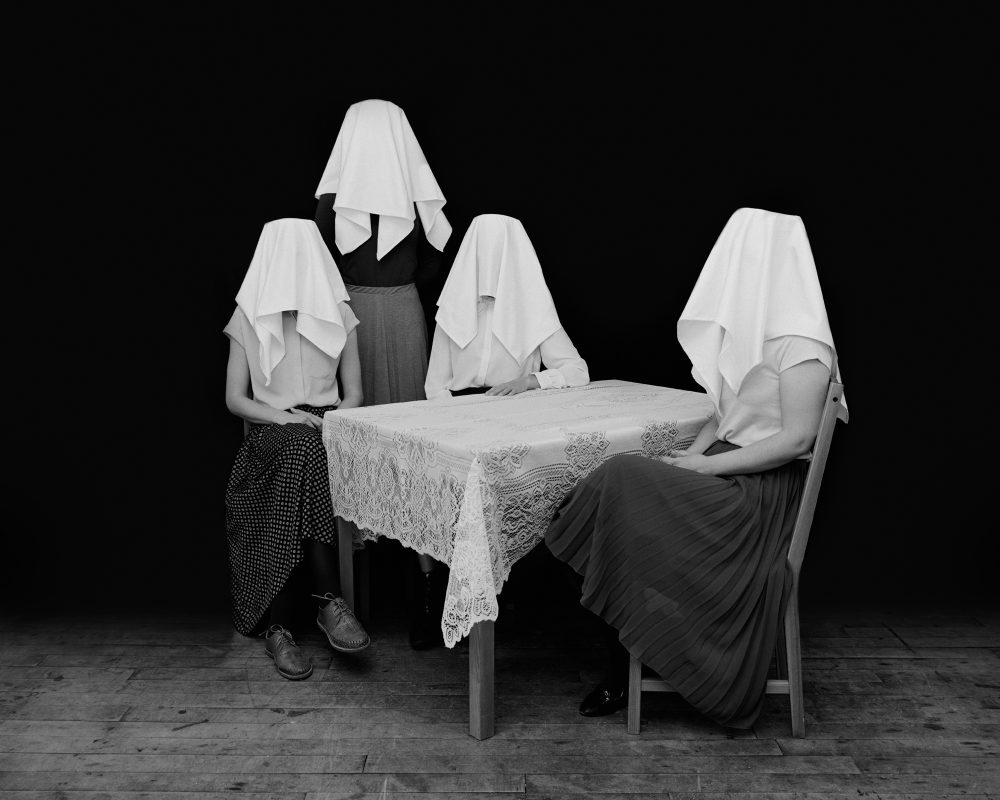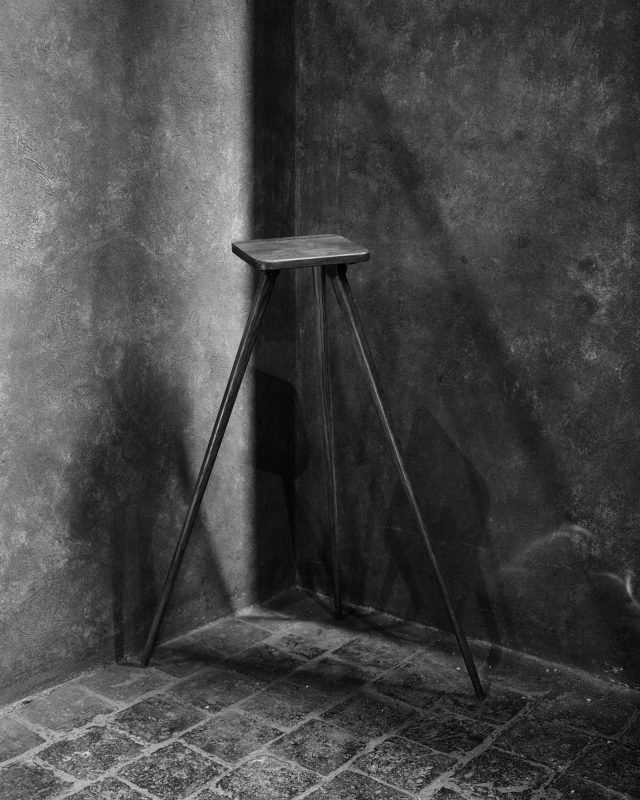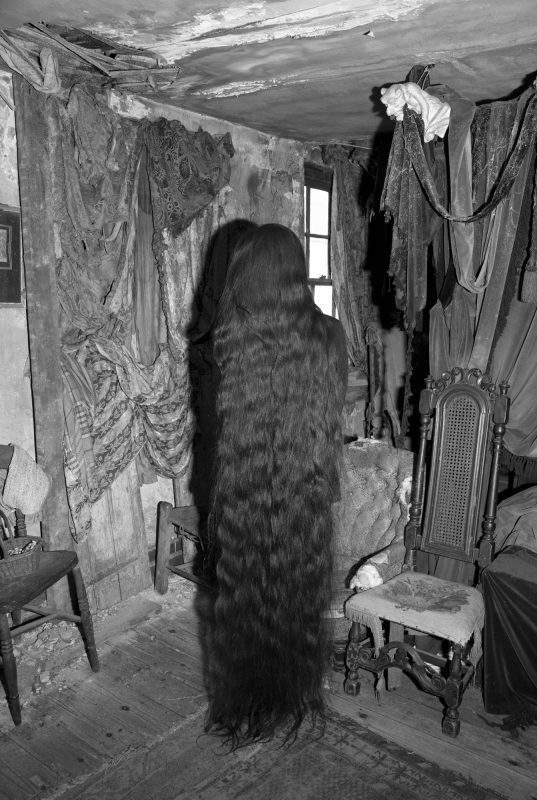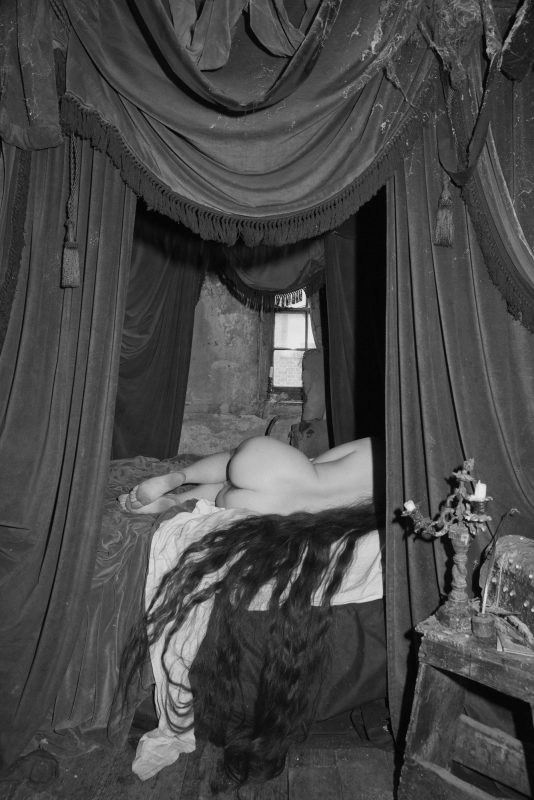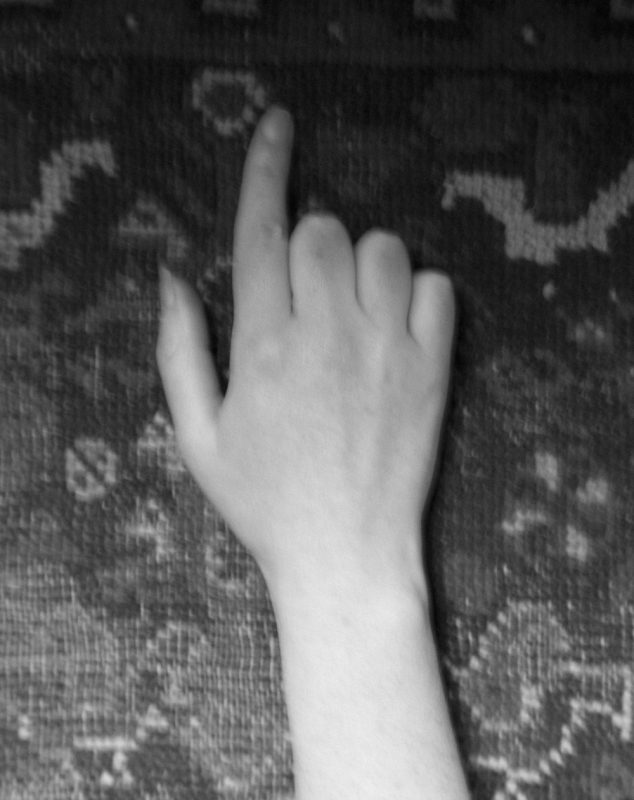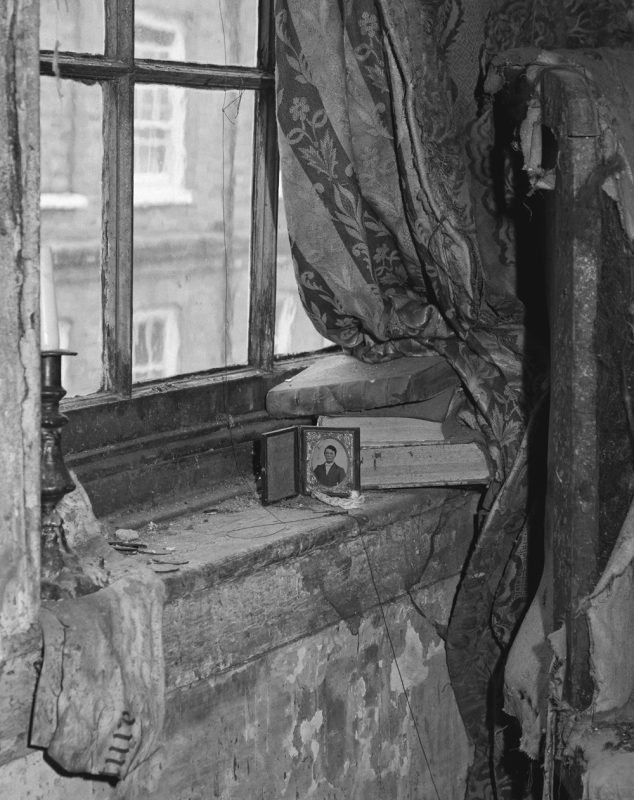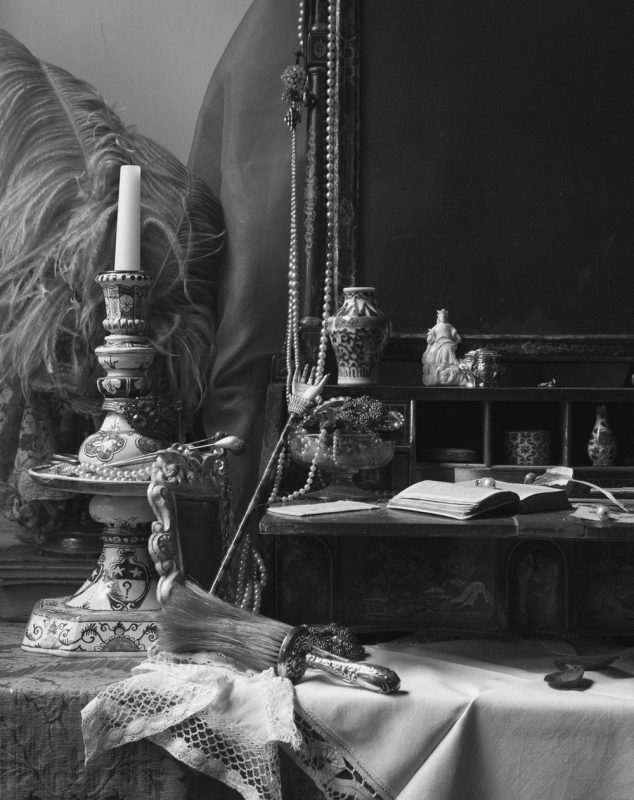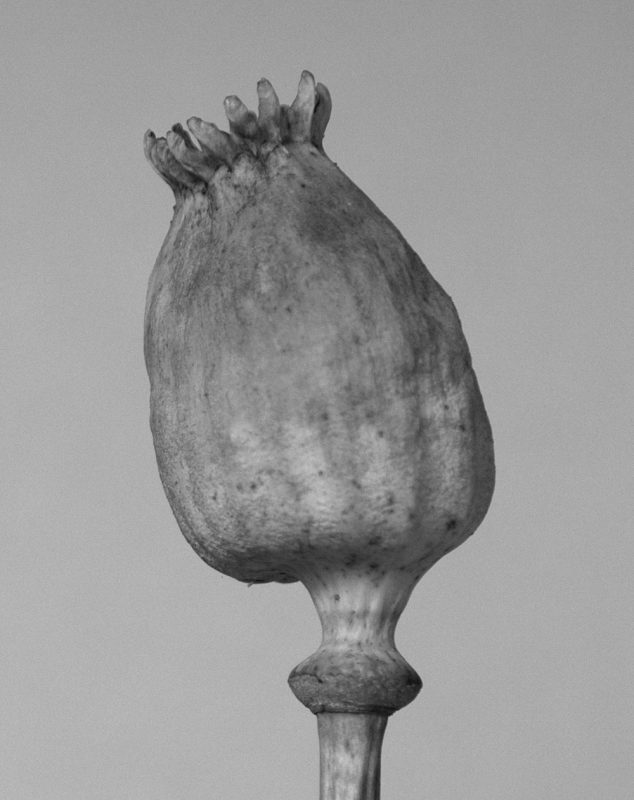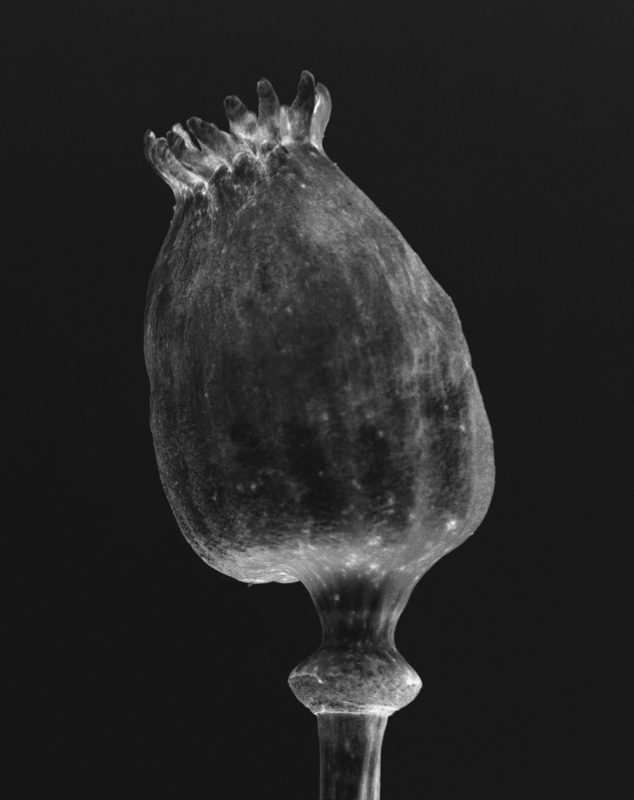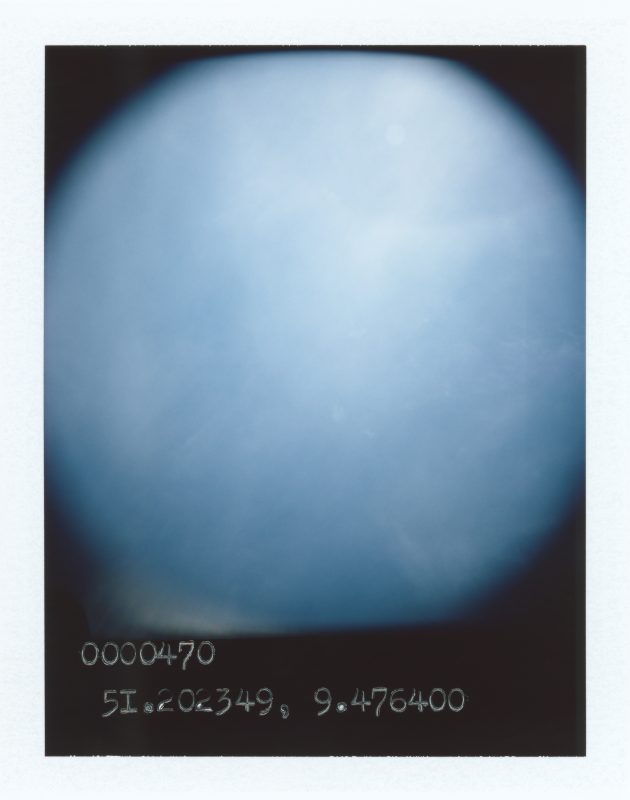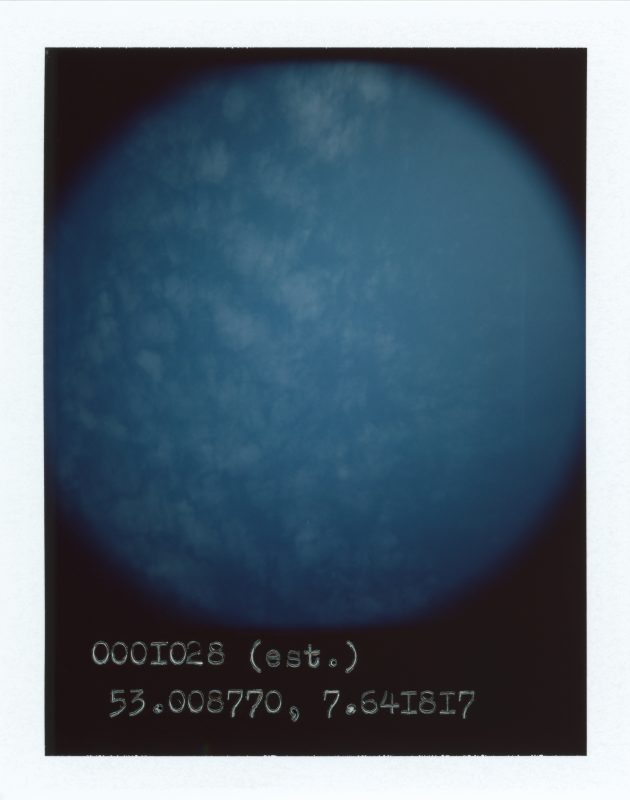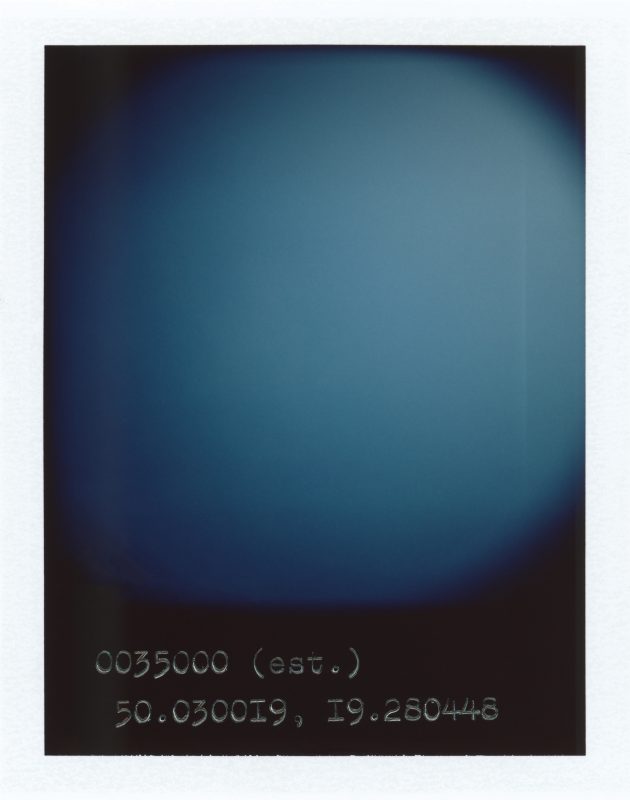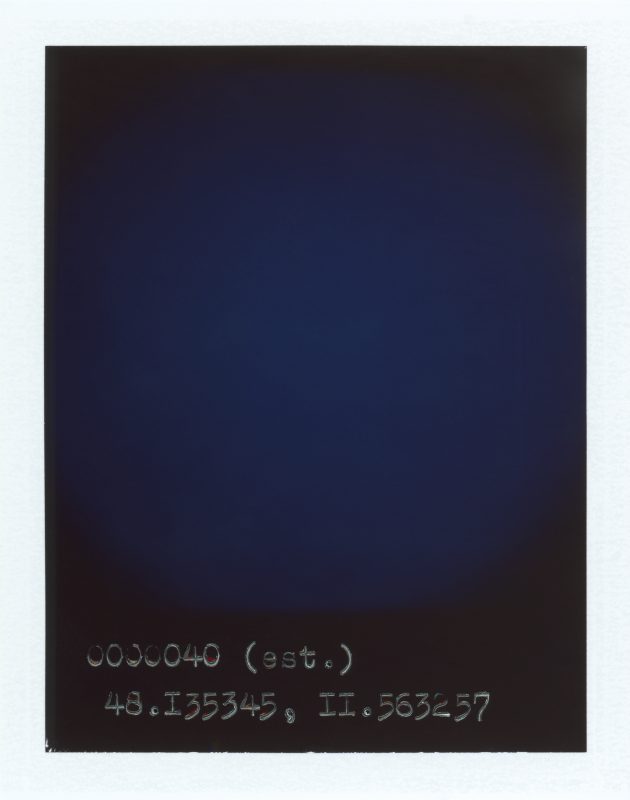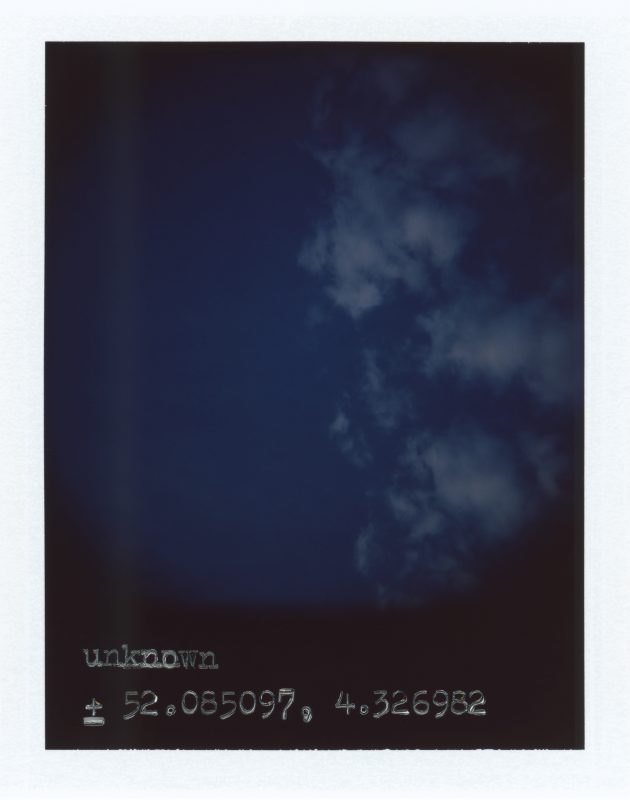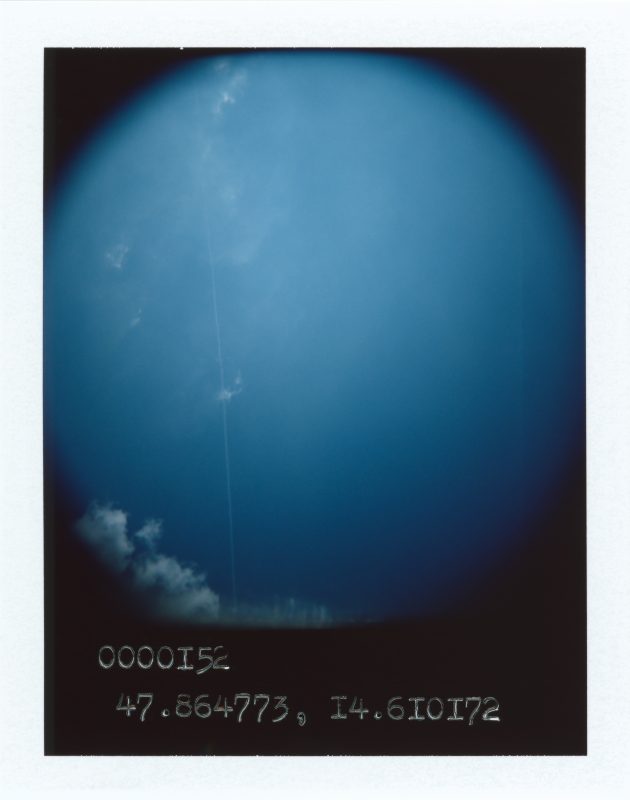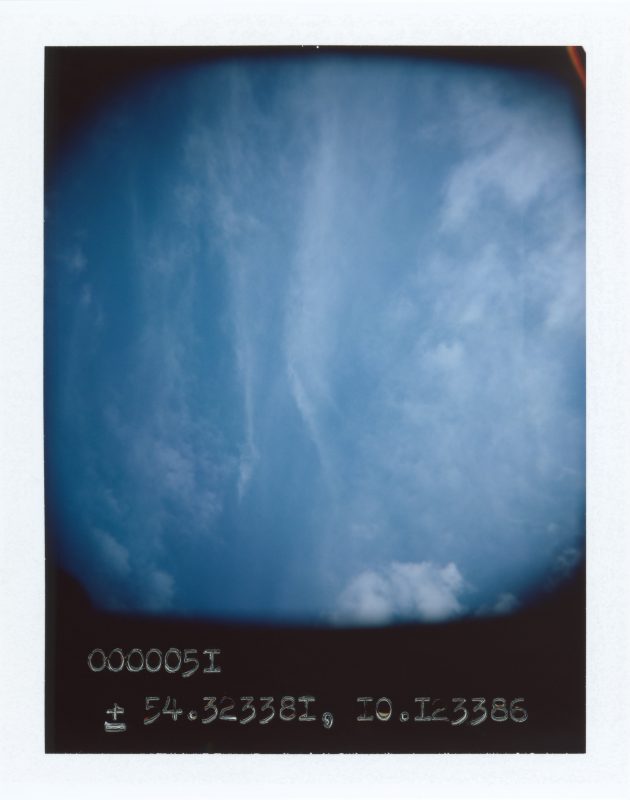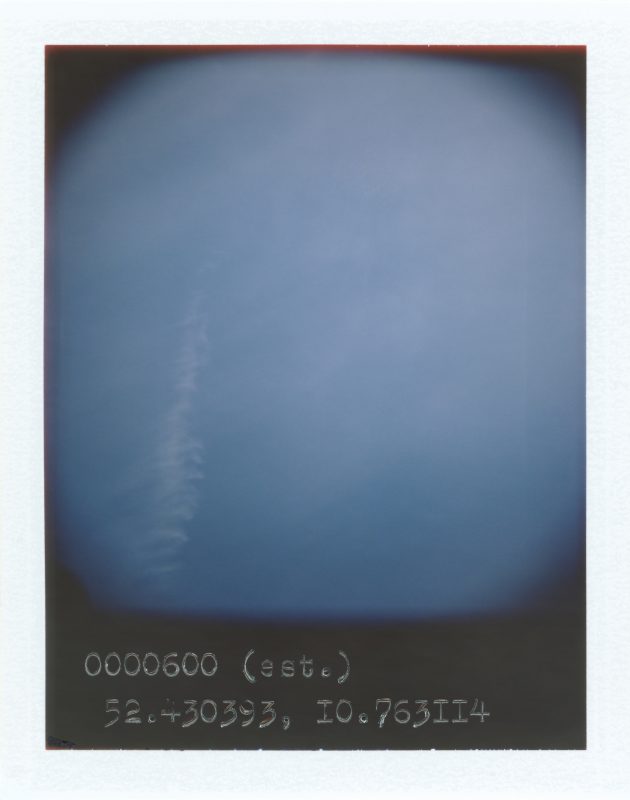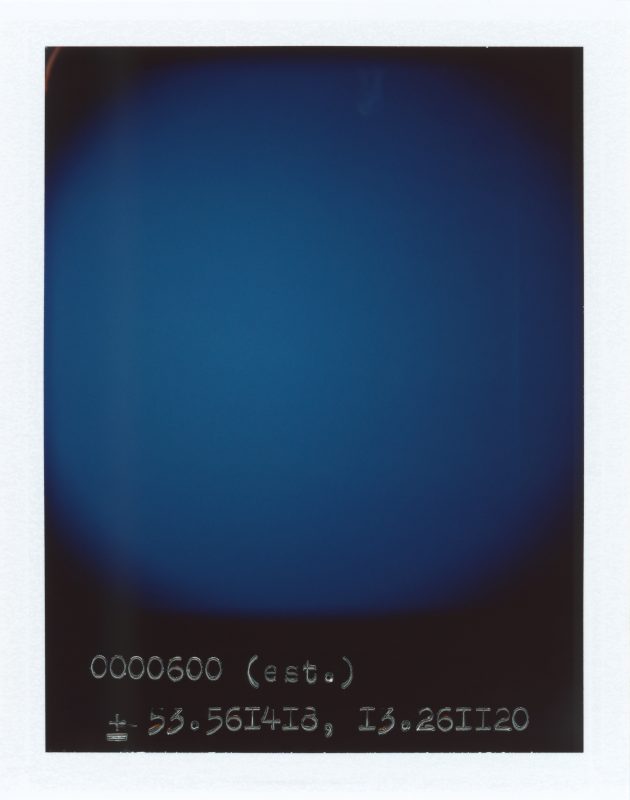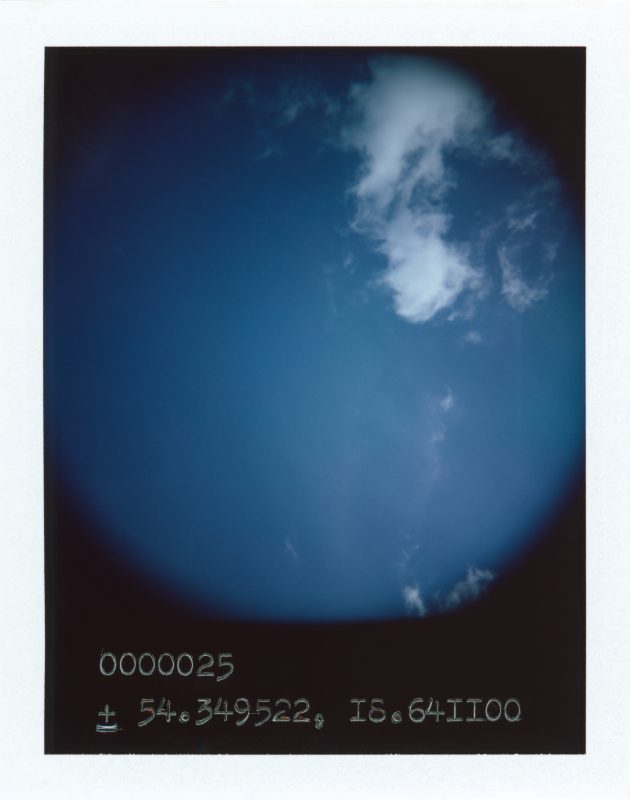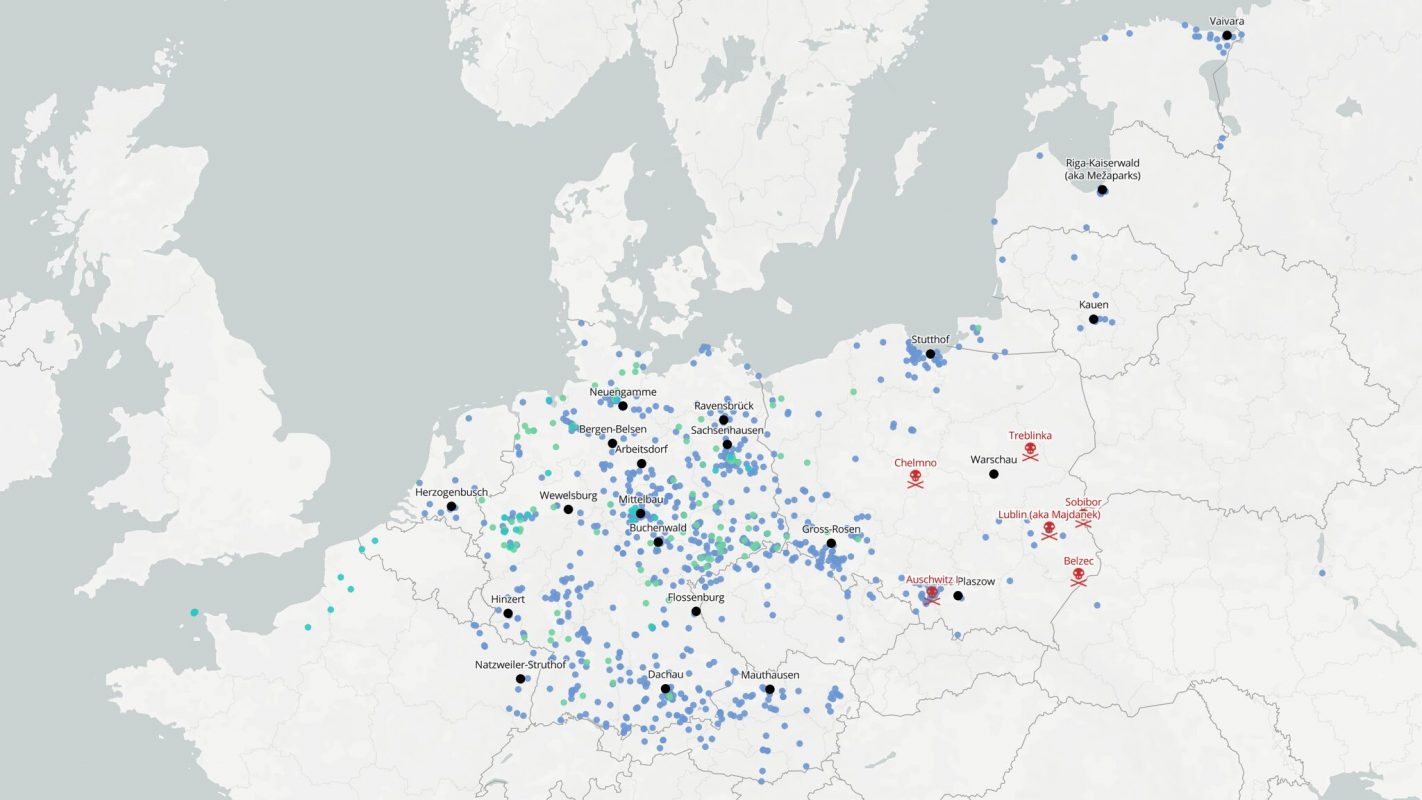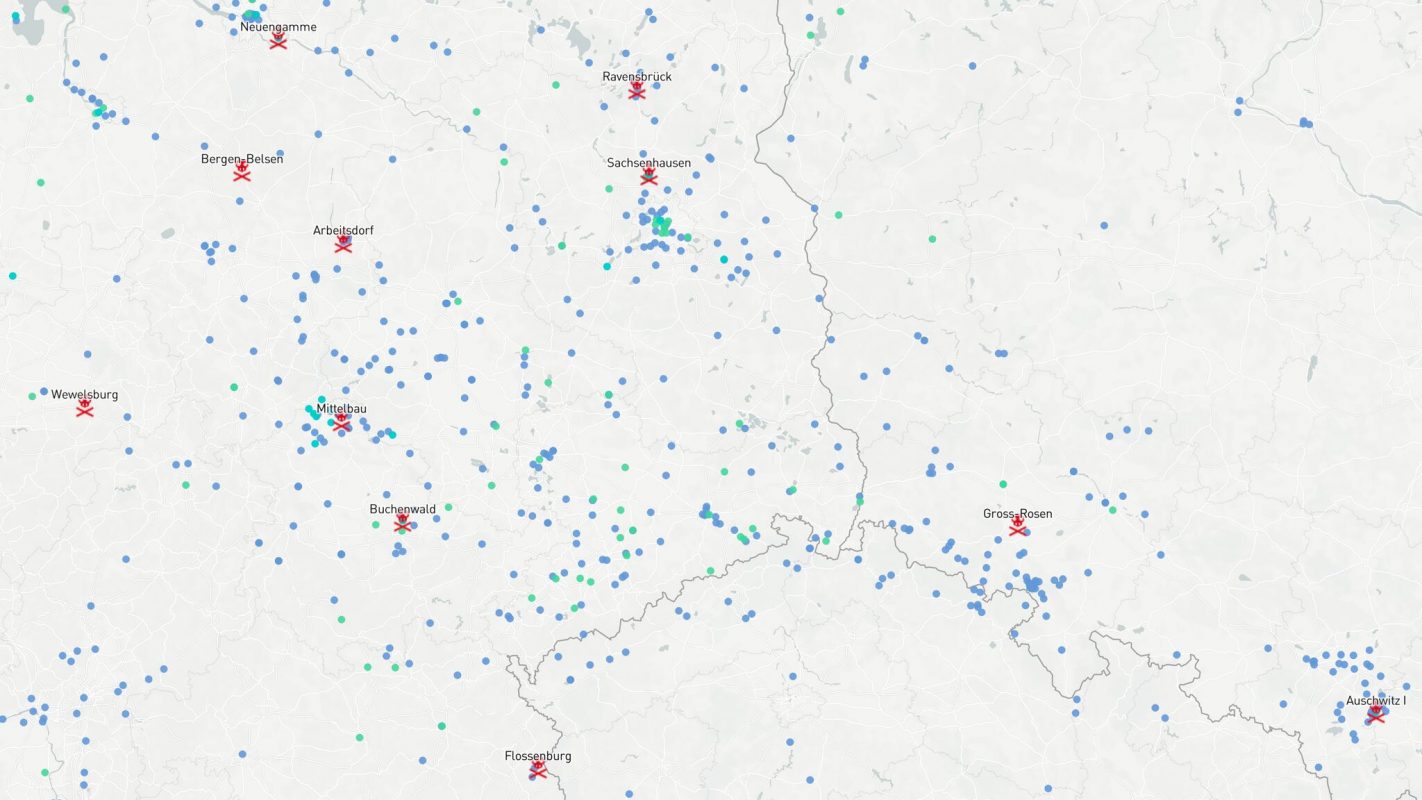Anton Kusters
The Blue Skies Project
Essay by Martin Barnes
Over the last five years, Belgian photographer Anton Kusters has dedicated much time, travel and sensitive thought to a project relating to the Holocaust*. It is probably the most documented event in history, and one of the most complex and difficult subjects that any artist can choose. Towards the completion of his project he concludes that it is a failure. Recognition of failure is not usually an artist’s preferred resolution. Yet this realisation does not seem to fill him with disappointment or regret, only a humbled sense of acceptance. The apparent failure in Kusters’ project is not through misrepresentation of his subject, or through any lack of commitment or productiveness. Rather, it is an inability, encountered by many who engage at a conceptual and expressive level with the atrocity, to truly comprehend it. This kind of ‘failure’ is in fact a profound resolution of sorts and should not be judged solely and restrictively within conventional cultural terms. For the subject of horror and trauma with which Kusters has carefully grappled has always tested the very limits of representation.
Kusters’ The Blue Skies Project was initially prompted back in 2007 with the death of his grandfather and a mysterious story concerning his time during World War II. Although he was neither Jewish, nor a member of the Belgian resistance, Kusters relates that his grandfather was nevertheless targeted for deportation by the SS in 1943, when they came specifically looking for him in his small Belgian village. However, he was able to flee the night they raided his house and was never captured. Kusters was not able to ask his grandfather about the details before his death; and so a link with this unresolved past and a trail of speculation was established. What if his grandfather had been captured, and where might he have been taken? What would he have witnessed and remembered?
Kusters began researching the Nazi’s sites of detainment and official concentration camps, using major publications dealing with Nazism and the Holocaust: the German, Der Ort des Terrors. Geschichte der nationalsozialistischen Konzentrationslager. (The Place of Terror: History of the Nazi Concentration Camps); and the US-published Encyclopedia of Camps and Ghettos, 1933-1945. Until these multi volume publications appeared in 2005 and 2009 respectively there had never been such a comprehensive listing of the Nazi’s sites of detention, persecution, forced labour and murder. The information the encyclopaedias contain is overwhelming and the locations of the crimes much more widespread and varying in their scale than is popularly understood. The well-known sites and numbers of estimated deaths at them are of course listed; but many smaller sub camps and centres appear too, some hidden in the heart of towns and cities. Kusters has taken the data in the encyclopaedias and turned it into tangible visual form, echoing the publications’ process of research and taxonomy.
Traveling to 1,078 locations in Europe listed in the encyclopaedias, Kusters decided not to make a forensic set of descriptive or documentary images, as might be expected with such a research-based project. Instead, he made just three unique 8 x 10 cm Polaroid photographs as close as possible to each site. These he tagged with the GPS coordinates and the number of deaths estimated at the location. The numbers are blind-stamped into the photographs by the hammers of his manual typewriter. Such stark data and his systematic approach make a chilling reference to the catastrophic efficiency of the Nazi’s programme of extermination. Yet the subject found in the images eludes expectation. Here, we see no rooms, buildings, streets, landscapes or people. No signs, scars, reference markers or discernible traces, if any could be found, of a traumatic history. Instead, planning his visits to each site according to the weather forecast, Kusters waited patiently for days on which he could point his camera directly upwards, aiming for a cloudless blue sky.
By keeping the camera settings the same for each shot, the varying luminosity of the sky itself dictated the levels of exposure. The images therefore vary individually from bright to dark, creating a subtly shifting range of tones within the colour blue when seen together. To enhance this effect of individuality within similarity, one original Polaroid from each of the 1,078 locations is arranged and displayed to make up an imposing framed grid. The images alone contain no other visual information than the sky and occasional clouds, and appear therefore abstract and disembodied from time and place. Only the ruthless typed data captions anchor them. Except for our crucial knowledge of their meaning, the numbers are as innocent as the skies. The digits are deft markers of gathered evidence; the heavens are a poetic evocation. Together they form an axis of distant but connected poles, between objective data and suggestive resonance.
Our first common associations with blue skies – freedom, expansiveness, and the spiritual realm – may sit at odds with what we know about the trauma and murder perpetrated at the sites. This, coupled with the deliberately ‘empty’ images, and their capacity to be read as abstract compositions – or a backdrop ‘screen’ for personal discovery – might suggest an inappropriately aesthetic approach that poses ethical and moral questions. Kusters was intuitively drawn to, yet troubled by, this subject choice. After a long journey of photographing the skies he found legitimacy in a surprising eyewitness account, Landscapes of the Metropolis of Death, the memoir of eminent Israeli historian Otto Dov Kulka. In 1943, at the age of ten, Kulka was deported with his family from his home in former Czechoslovakia to Auschwitz-Birkenau. His sister, mother and father perished but Kulka survived. It was not until some seventy years later that he wrote about his childhood memories: ‘There is almost no return to that Metropolis, with its somber colours, with the sense of the immutable law that encloses all its beings within confines of allotted time of death; that is, there is almost no sense of a return to that world without a sense of return to those wonderful colours, to that tranquil, magical and beckoning experience of those blue skies of the summer of 1944 in Auschwitz-Birkenau.’
As one reviewer has noted of Kulka’s memoir, ‘… even in Auschwitz there are moments of protest, black humour and beauty … like the bright blue of the sky over the camp that Kulka’s childhood mind snaps and files away like a photograph.’ Kulka’s evocative account fuses the fragments of childhood memory and experience with his adult historian’s understanding. In their multiplicity within the arranged grid, Kusters’ simple images poignantly imply the millions of other such ‘snapshot’ memories of individuals who did not survive.
It matters in this case that the photographic paper of the unique Polaroid is an analogue process that leaves a chemical trace. Kusters’ choice of process implies a parallel between the sensitive surface of the paper and the receptive memory or psyche of the individual who receives a similar imprint. He suggests that his photographs, like the sky above which they depict, might at some infinitesimal level contain the last molecular traces of the individuals who died at each site. Even if these are only poetic ideas rather than scientific facts, it is clear that Kusters’ journeying to each location is crucial to him and the meaning of his project on several levels: as a mode of personal, individual commemoration for his grandfather; as an act of witnessing; as an attempt to understand the Holocaust; and as an offering of respect.
Writer and theoretician Ulrich Baer has written incisively about the problematic intersecting relationships between contemporary art photography, the subject of the Holocaust, and what might be construed as ‘disaster tourism’. He has outlined a concern for a reliance on ‘the auratic “experience of place” to commemorate the destruction of experience and memory’; and noted that we risk, ‘a promise that we can transcend the photographed void to reach some comprehensive, and thus consoling meaning’. The Holocaust, he implies, is too complex and extreme in its trauma and erasure to be contained in either memory or forgetting, or for us to locate within it traces of redemption. Kusters’ images do deal with both ‘aura’ and ‘void’, but crucially his typed captions introduce a closely researched specificity. In combination, these elements illustrate, as Baer has argued, that even if we can quantify and pinpoint a sight of trauma, ‘we are forced to see that there is nothing to see’. Showing the emptiness however still triggers a response, a range of emotions and questions. The skywards perspective posits questions that are both formalist and conceptual. Where is the proper vantage point in relation to such places freighted with violence, trauma and historical distance? Does averting the camera’s lingering gaze upwards offer relief, denial or a necessary distance giving room to assimilate? The Blue Skies Project therefore demands an engagement from the viewer beyond a superficial glance. Kusters’ view without a fixed point of perspective is exactly the point. In this way, seeking a physical and moral perspective, the observer becomes implicated and involved.
A common trope in writing and imagery concerning the Holocaust is to describe it as ‘unspeakable’, ‘immeasurable’ or ‘inaccessible’. It is a realm where neither immense accumulation of knowledge nor metaphors of the void seem able to attain closure. While too much focus on evidence risks overwhelming the space for personal reflection, too much abstraction risks ignoring the evidence and repeating the injustice of denying victims singularity. In The Blue Skies Project, Kusters includes both the measurable and the immeasurable, and aims for a point between abstraction and specificity.
As the last survivors of the Holocaust now reach old age, the modes of both capturing and imagining their experience are shifting. In her book, After Such Knowledge, writer and academic Eva Hoffman charted each generation’s prevailing response: the 1950s ‘latency’ phase of forgetting or even denial; the 1990s ‘memory period’ of museum construction and anniversaries, when remembering seemed perhaps more important that reflective thought. Now, the descendants of survivors and the wider public are inheriting a legacy that in the 21st Century is further removed. Facts become separated from the living embodiment of a person. Memories of experiences are no longer first-hand, and are filtered and interpreted through technological media. Perhaps Kusters’ The Blue Skies Project are reflective of this new generation’s response. A tail-end analogue project realised in a digital age, it marks a transition from direct engagement with trauma, evidence and memory towards a more abstracted and contemplative form of representation.
At their most fundamental, photographs record traces of light and time. They are often seen as mute witnesses of events, envoys from the past, and generators of memory. The photographer inflects them with meaning by a choice of subject, framing and technique. Ultimately though, the images rely on the viewer to give them voice, seeking an echo of the photographer’s intention and the residue of the place and moment that was captured at their time of making. Images become activated by the interplay of components: the location and event at the moment of exposure; the photographer’s literal and conceptual viewpoint; the additional information we are provided with or discover for ourselves alongside the images; and the personal histories that we bring to those images as individuals. Sometimes, as in Kusters’ Blue Skies, the equation becomes more complex, fraught by a tangle of historical, aesthetic, moral and personal questions. The event that he set out to explore and capture is already a fading memory. The places, even if they can be accurately located, refuse to be contained, and cannot be encompassed by a single point of view. The artist has chosen to witness at the spot the event’s vanishing and most intangible residue in the form of reflected light. Yet between the fractures of evidential specificity and the abstracted trace, a space is opened up for reflection. This is a space to judge, grieve, remember, learn, and perhaps to understand. Kusters has only ‘failed’ by journeying far enough to encounter the boundaries of representing catastrophe. Yet he has succeeded in balancing the roles of both a witness and a creator. And his tragic, beautiful and haunting images encourage important questions about ethical ways of seeing. ♦
*I use the term ‘Holocaust’ throughout, recognising however the contested nature of the term and the use of other terms such as ‘Shoah’ and ‘The Final Solution’.
All images courtesy of the artist. © Anton Kusters
This essay is adapted from one of the accompanying texts for The Blue Skies Project, due to be published by Lars Müller and has been reproduced with kind permission. The Blue Skies Project is being produced by Monica Allende and Screen, the visual storytelling production company.
–
Martin Barnes is Senior Curator of Photographs at the Victoria and Albert Museum (V&A), London, which he joined in 1995.

